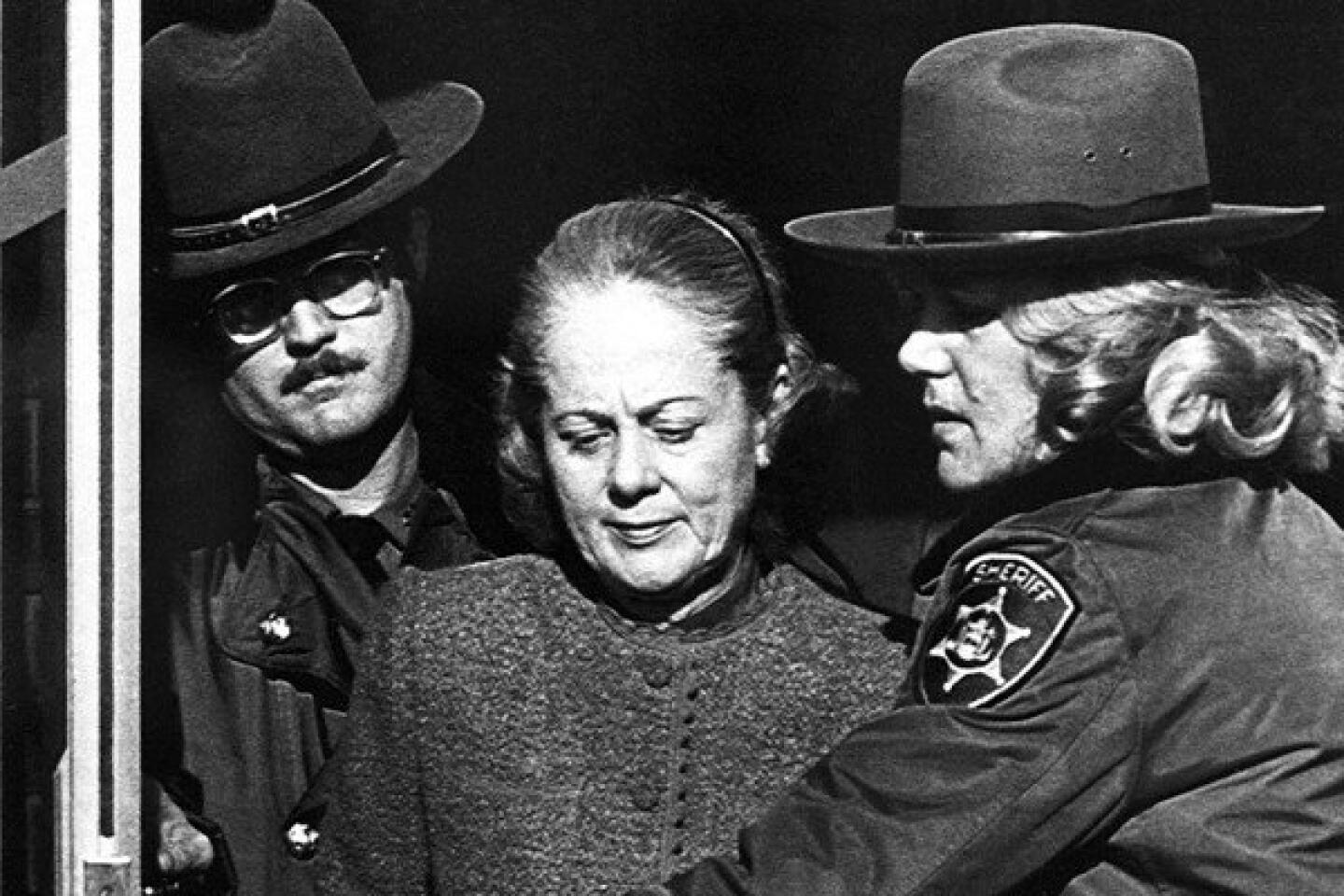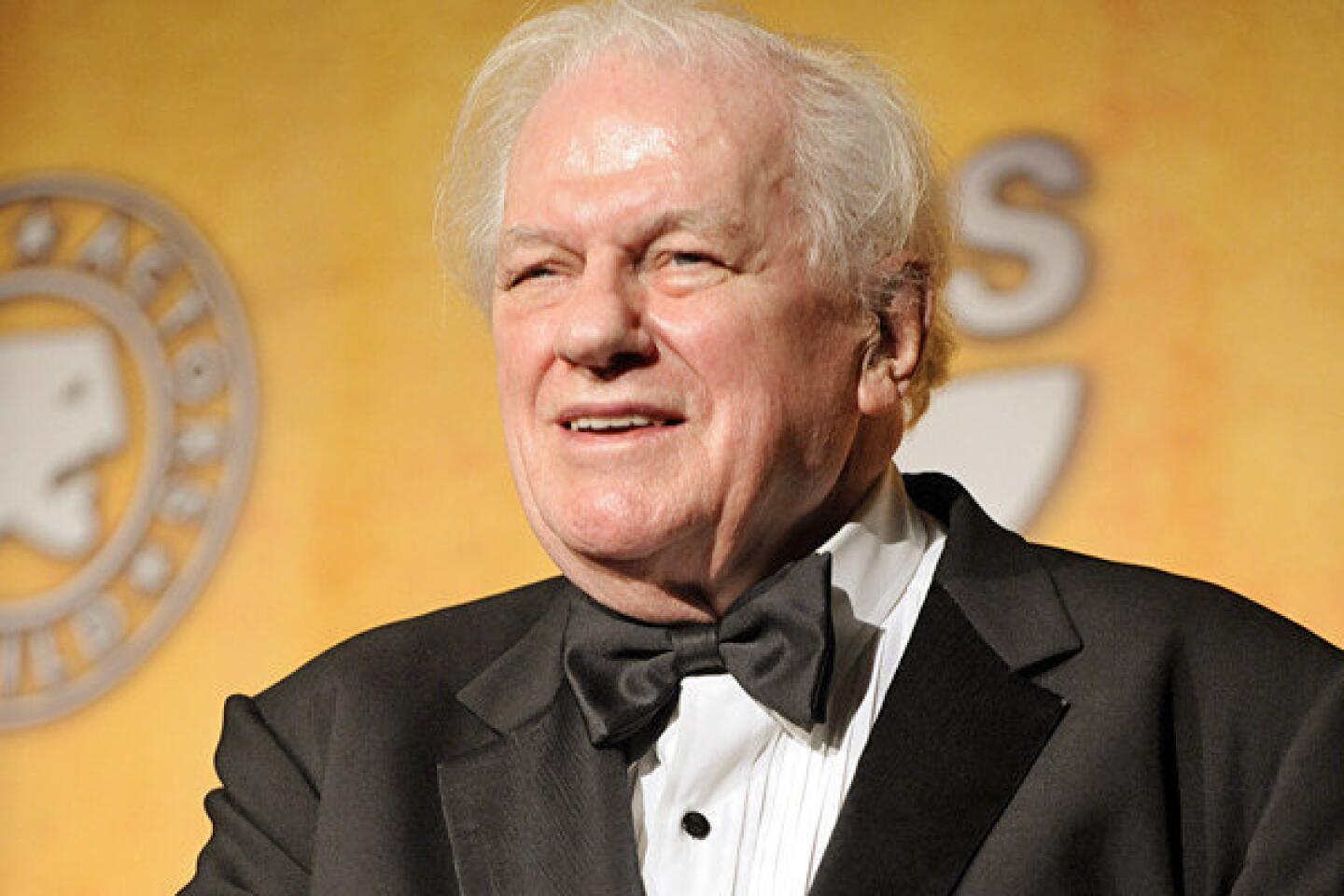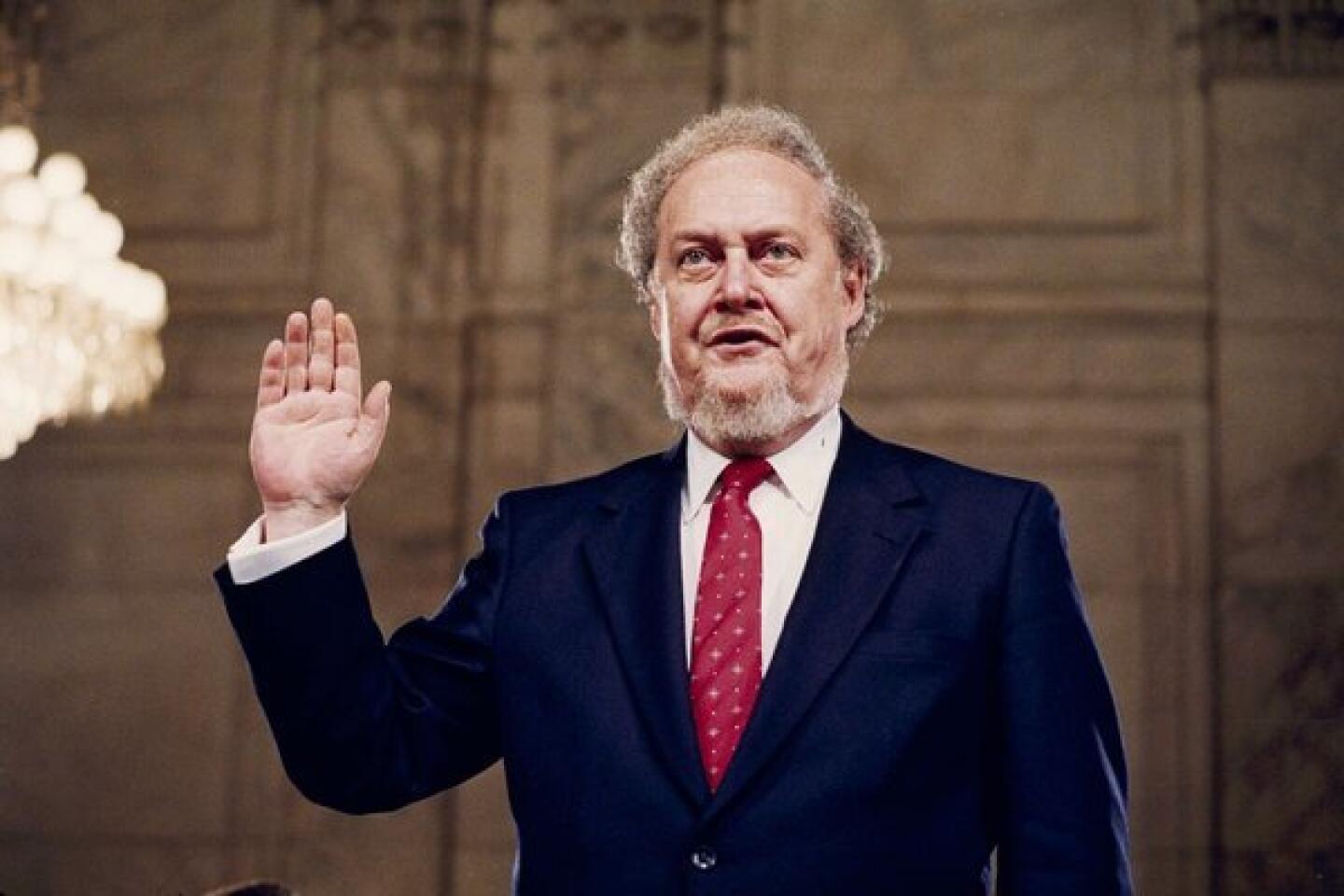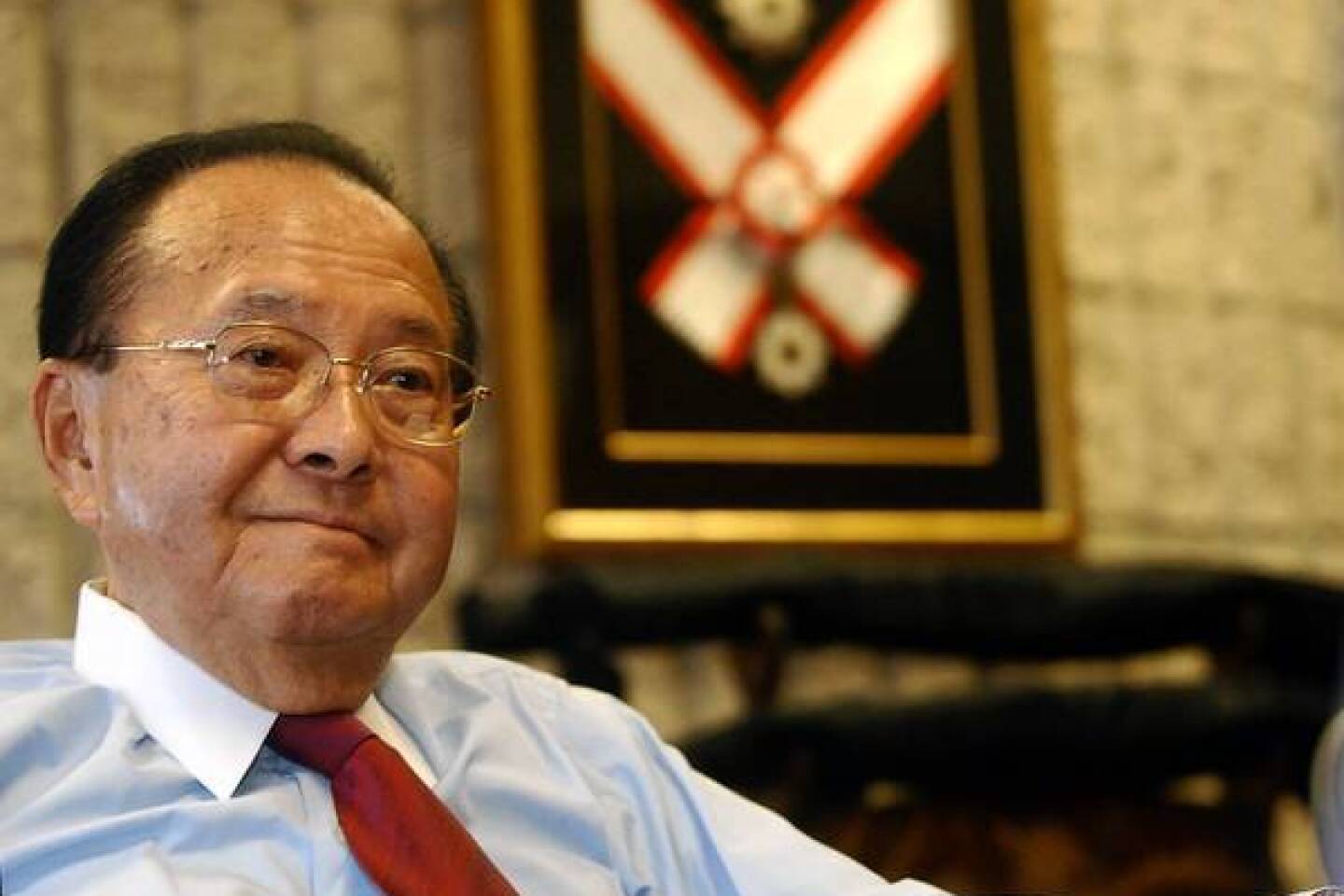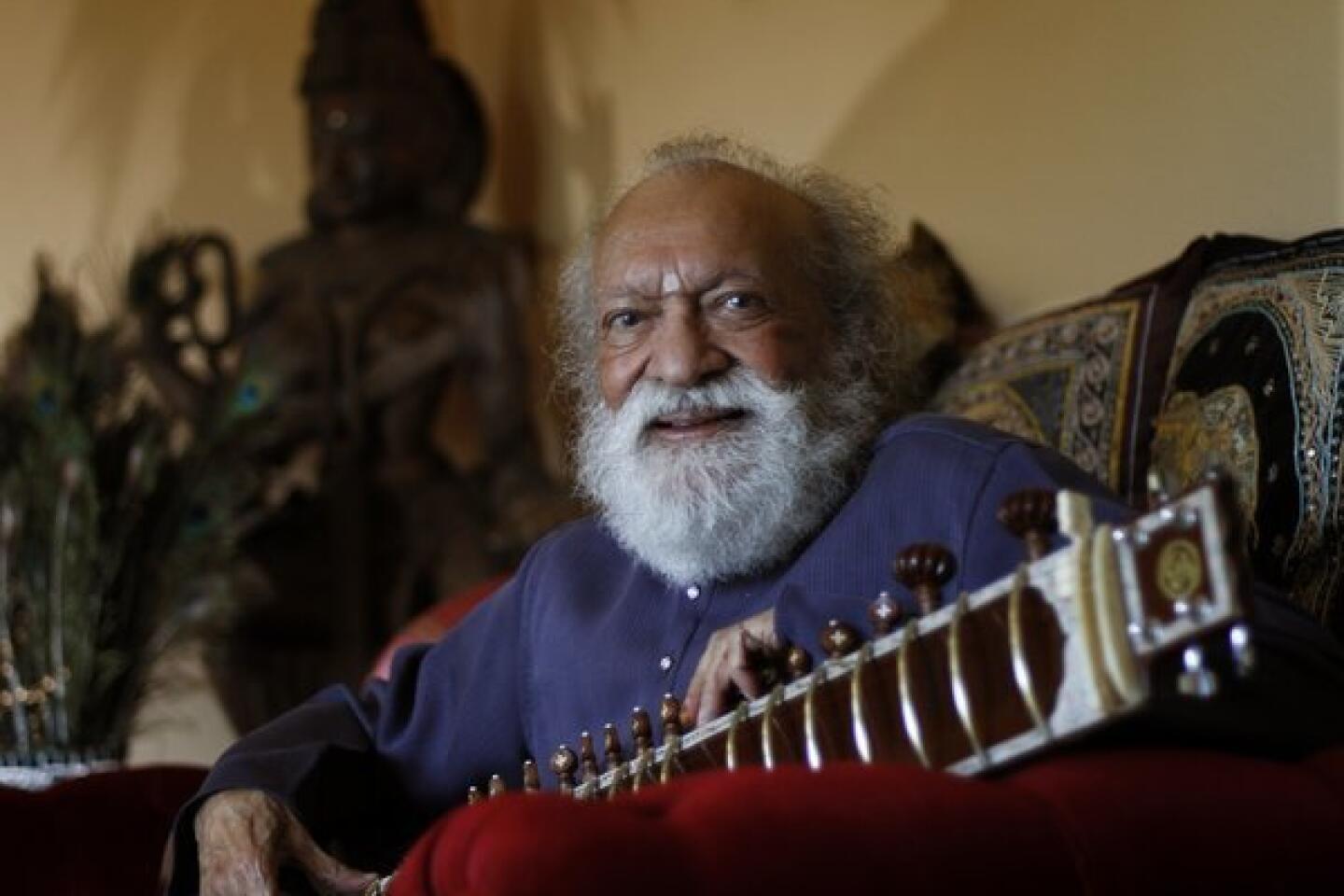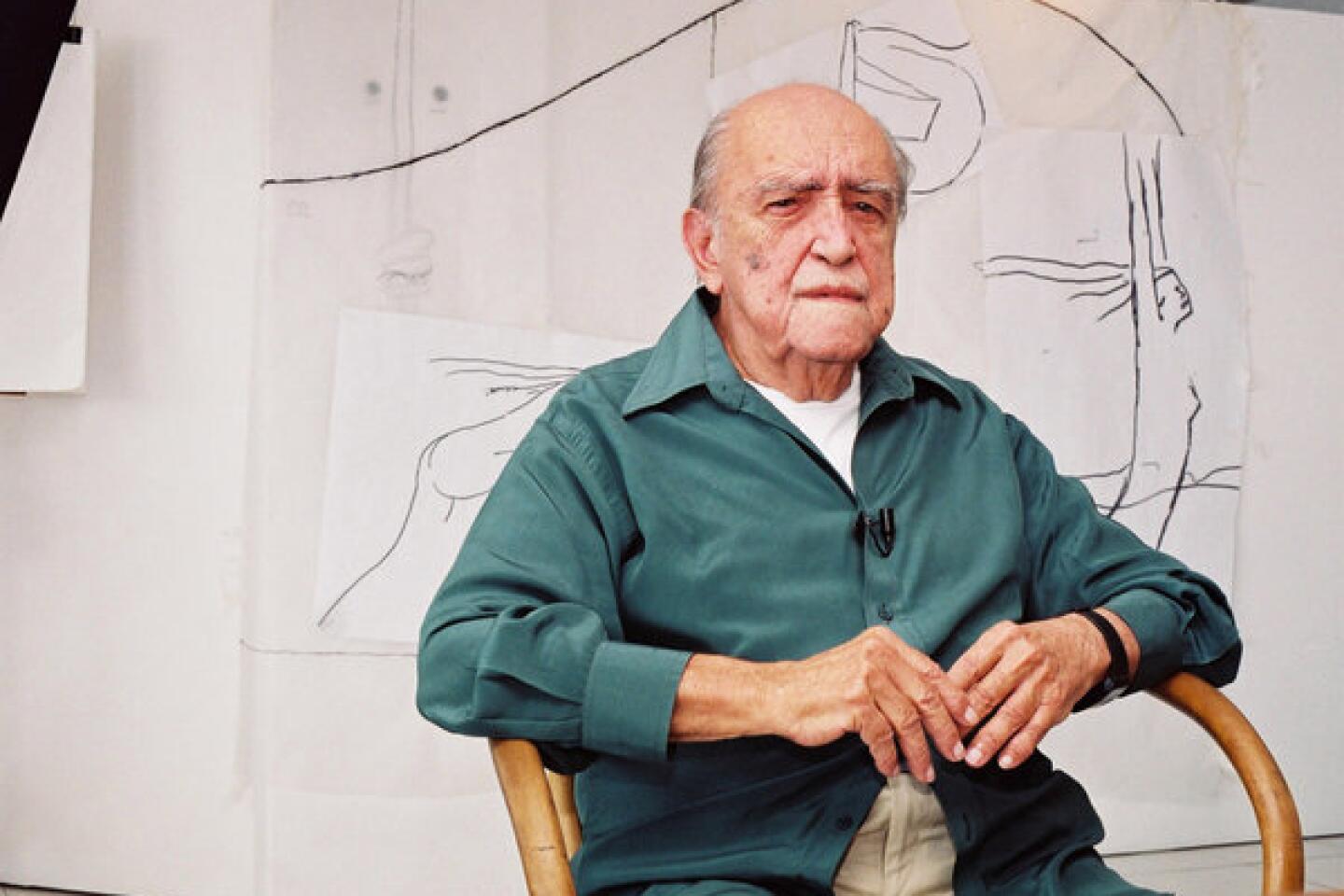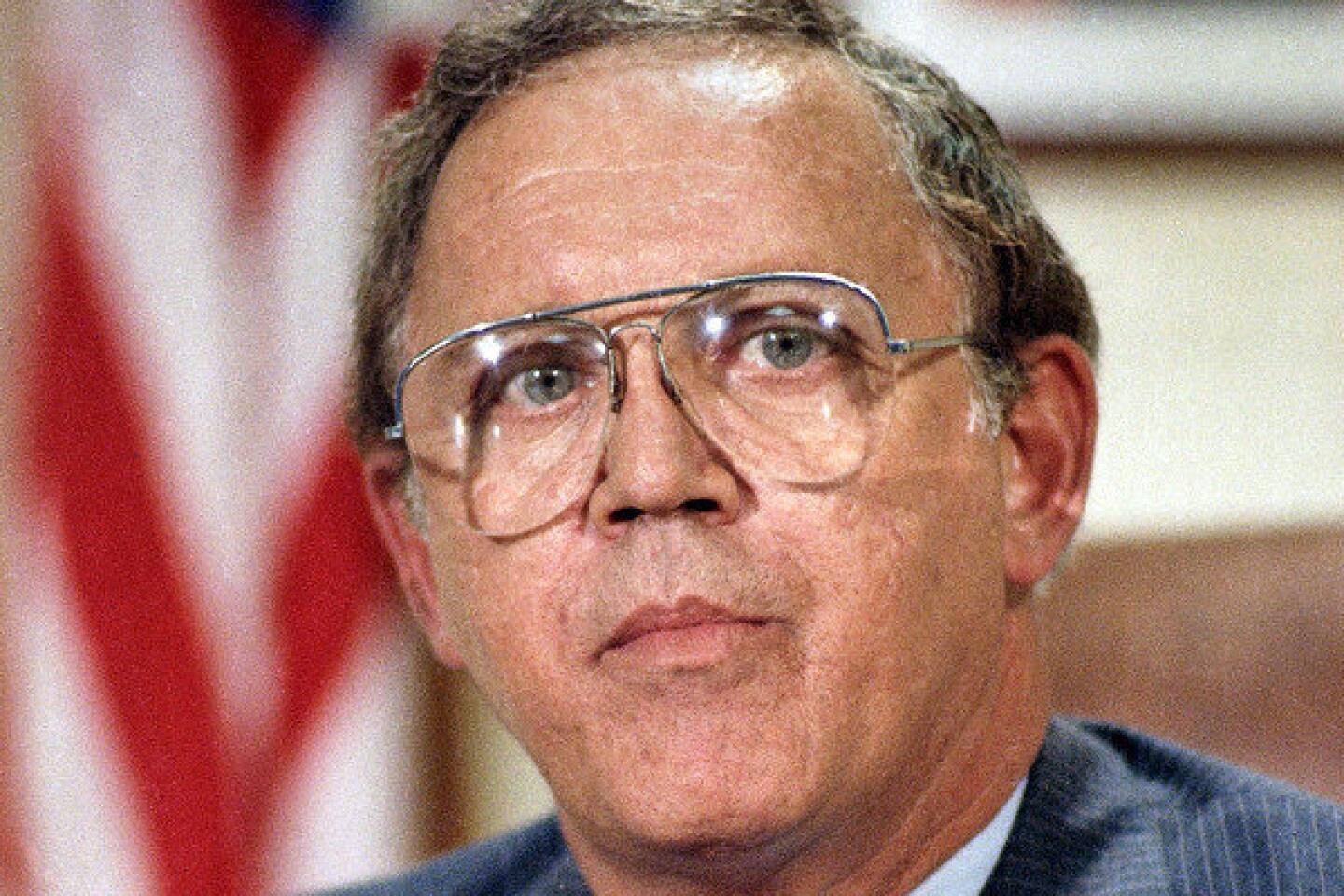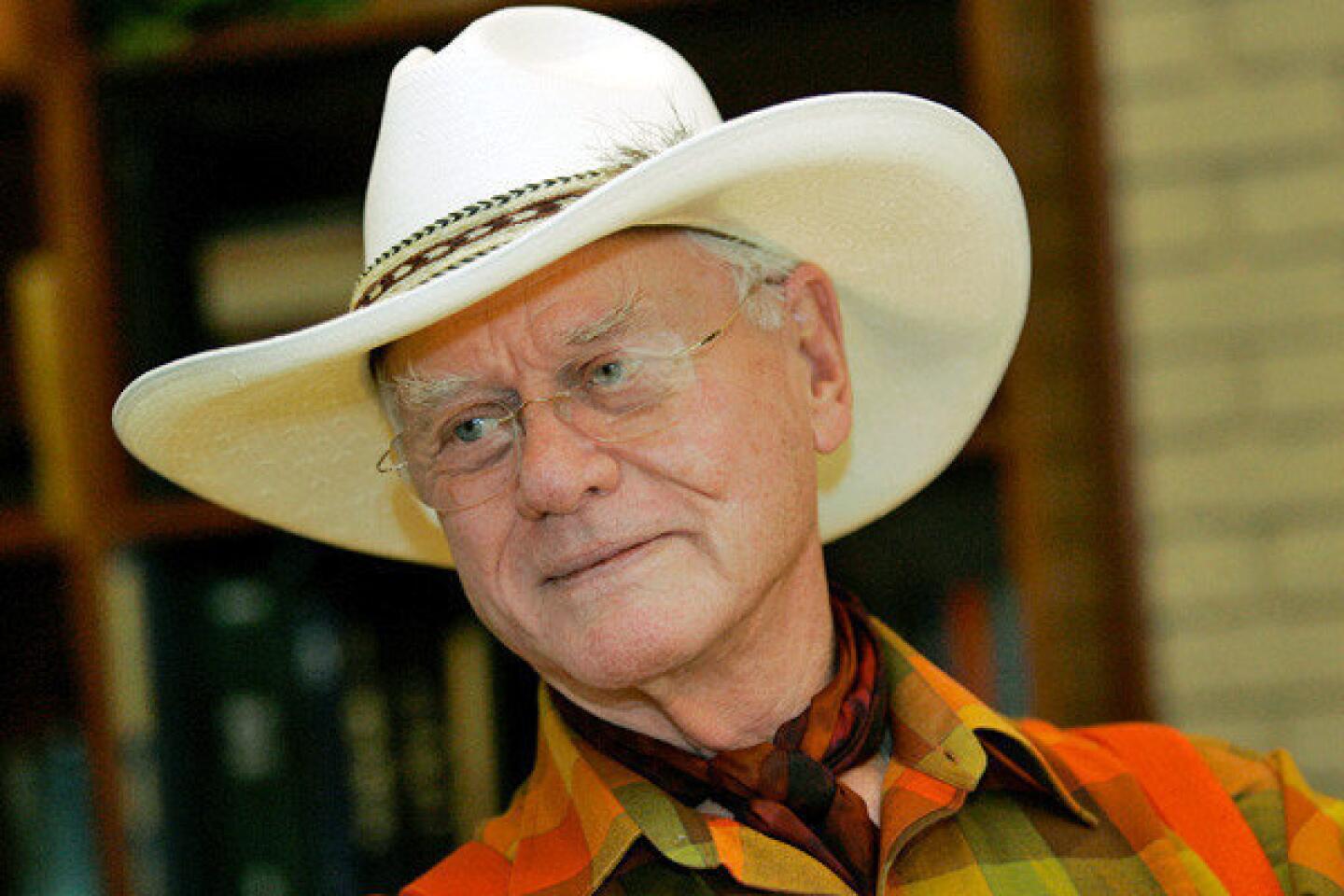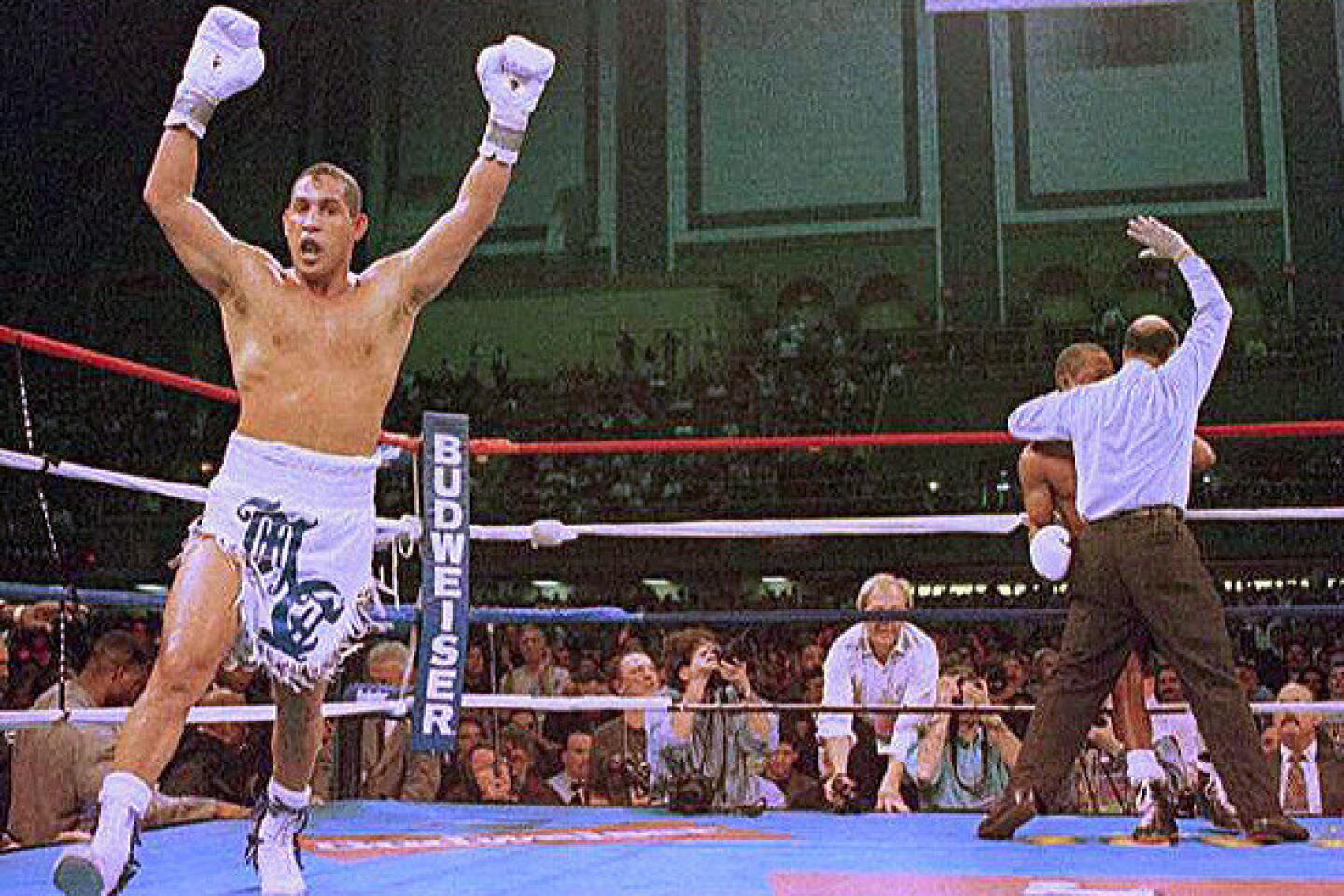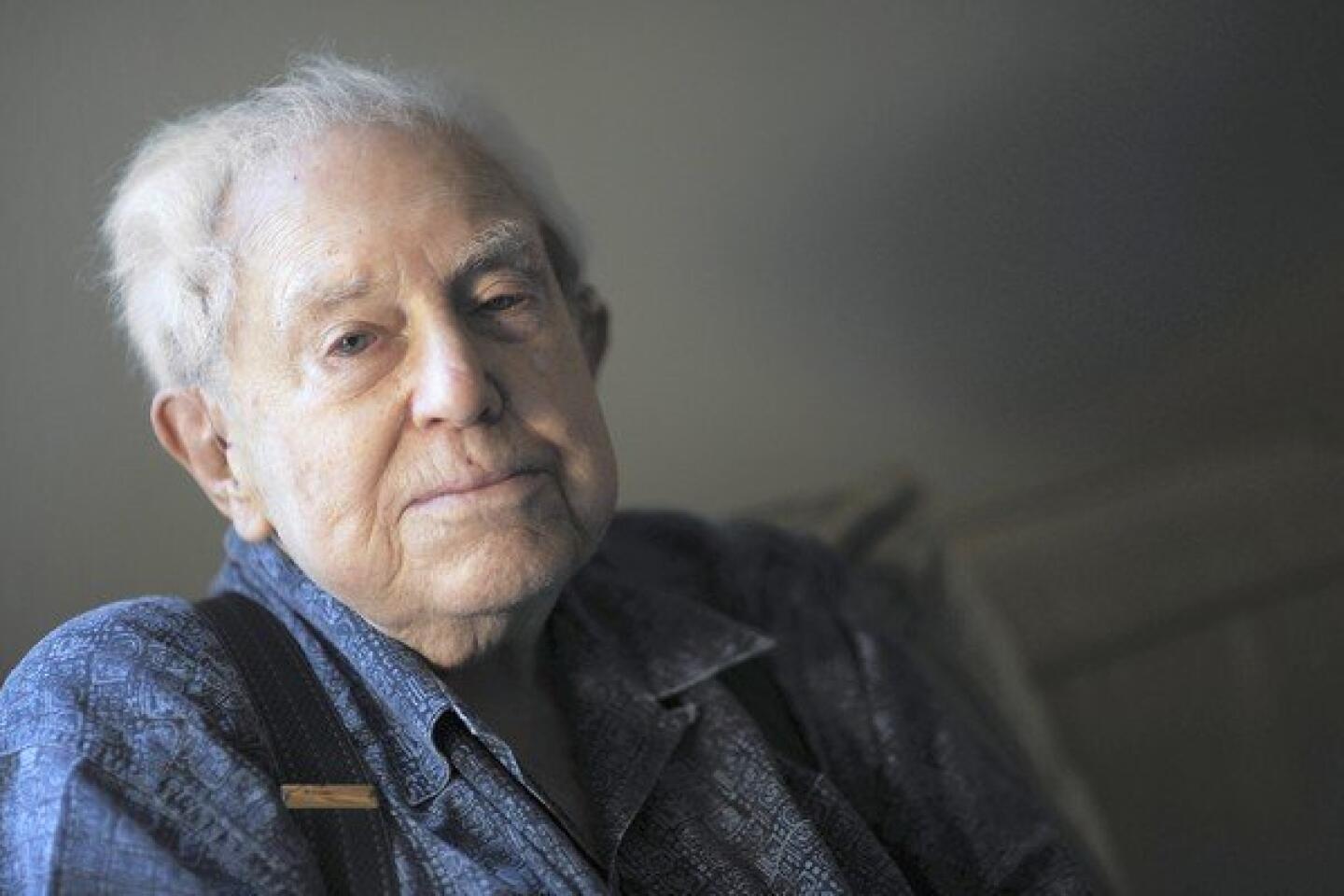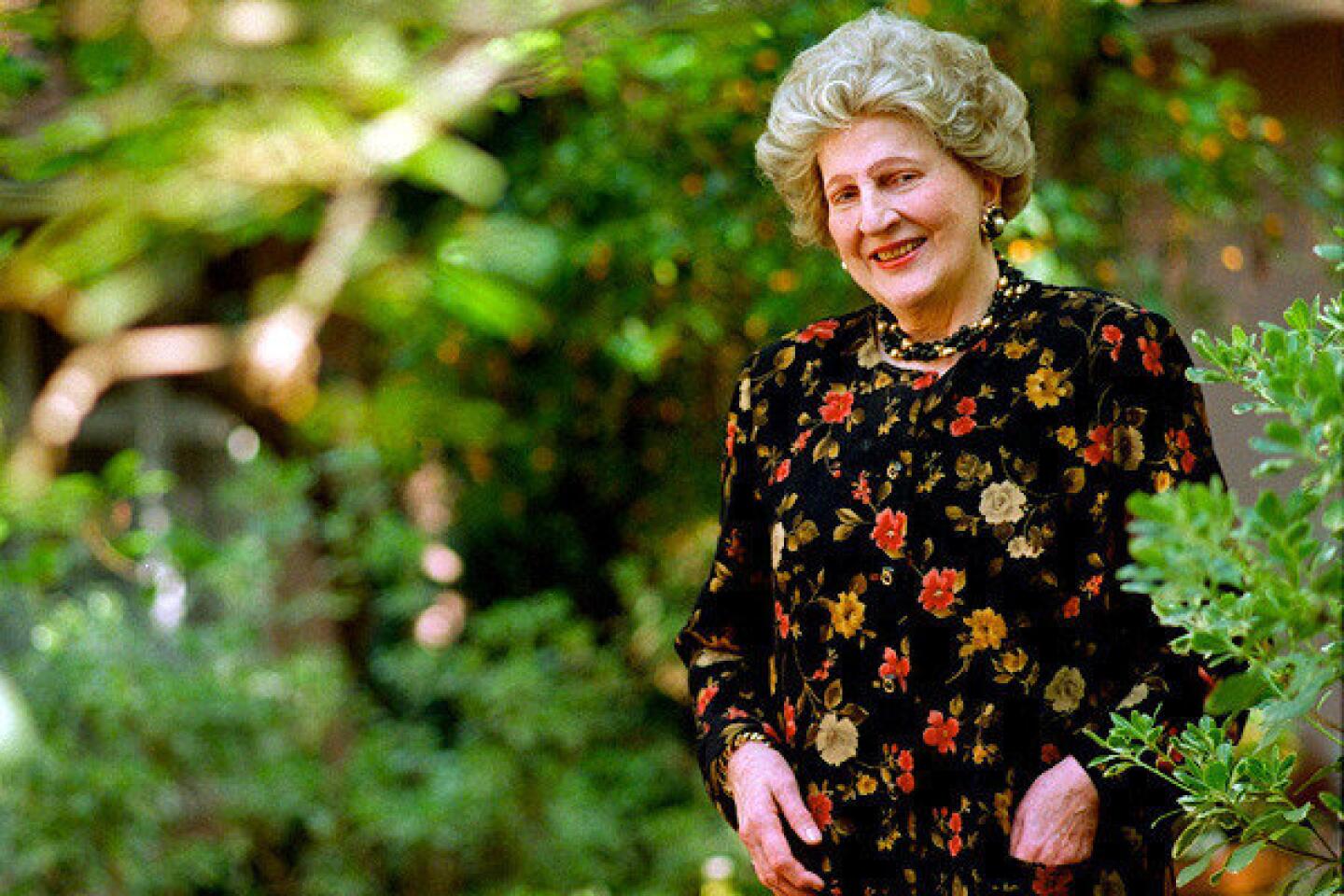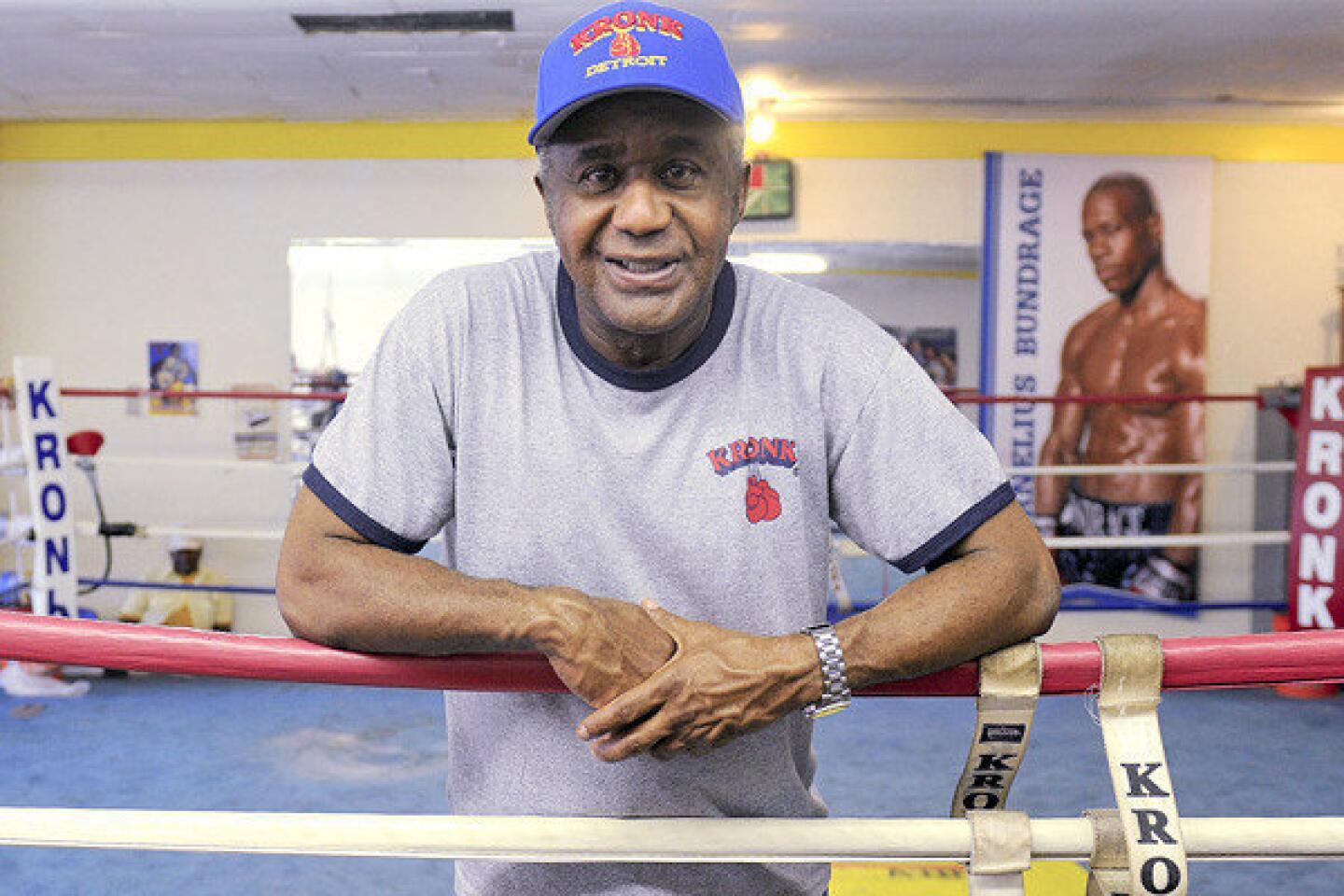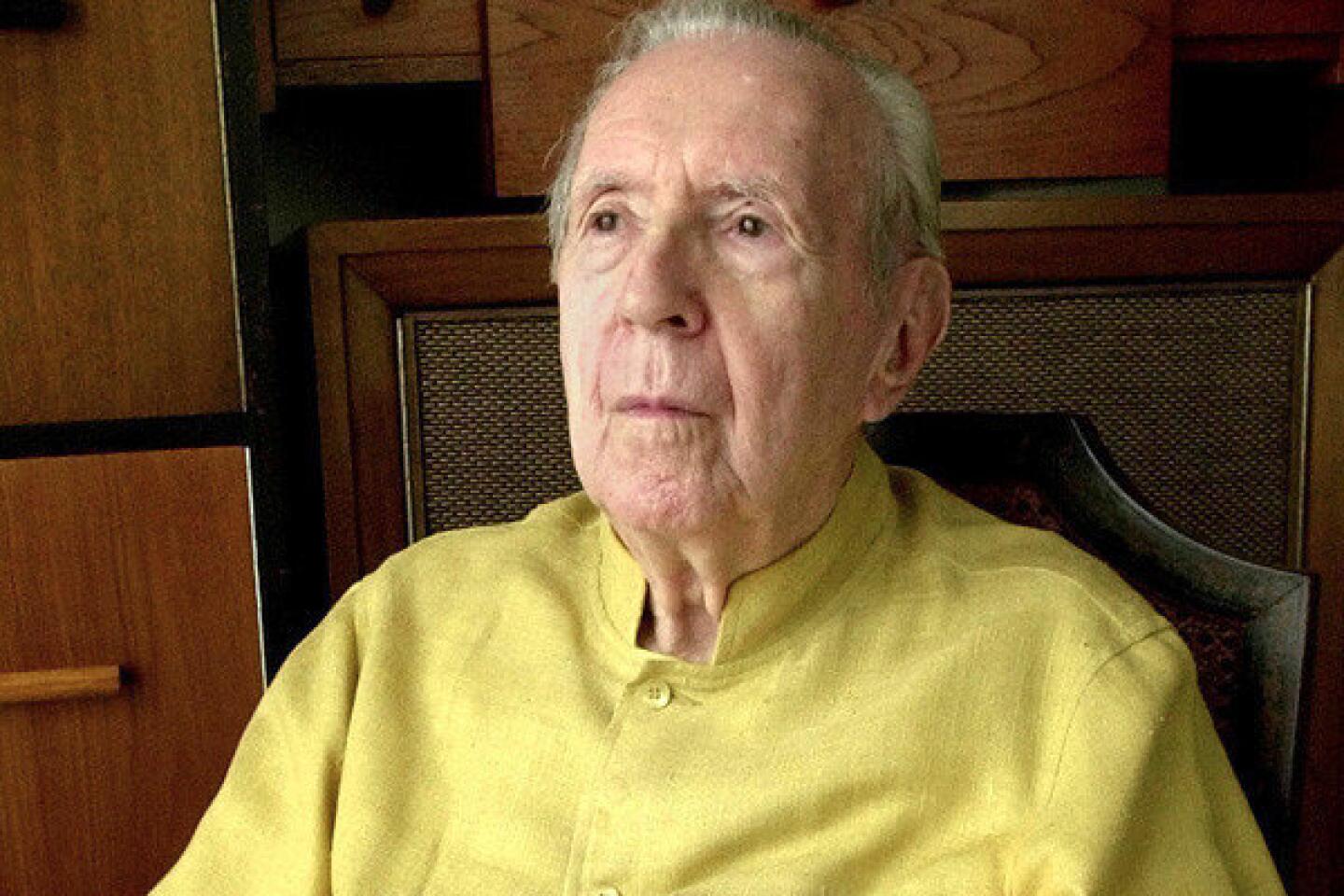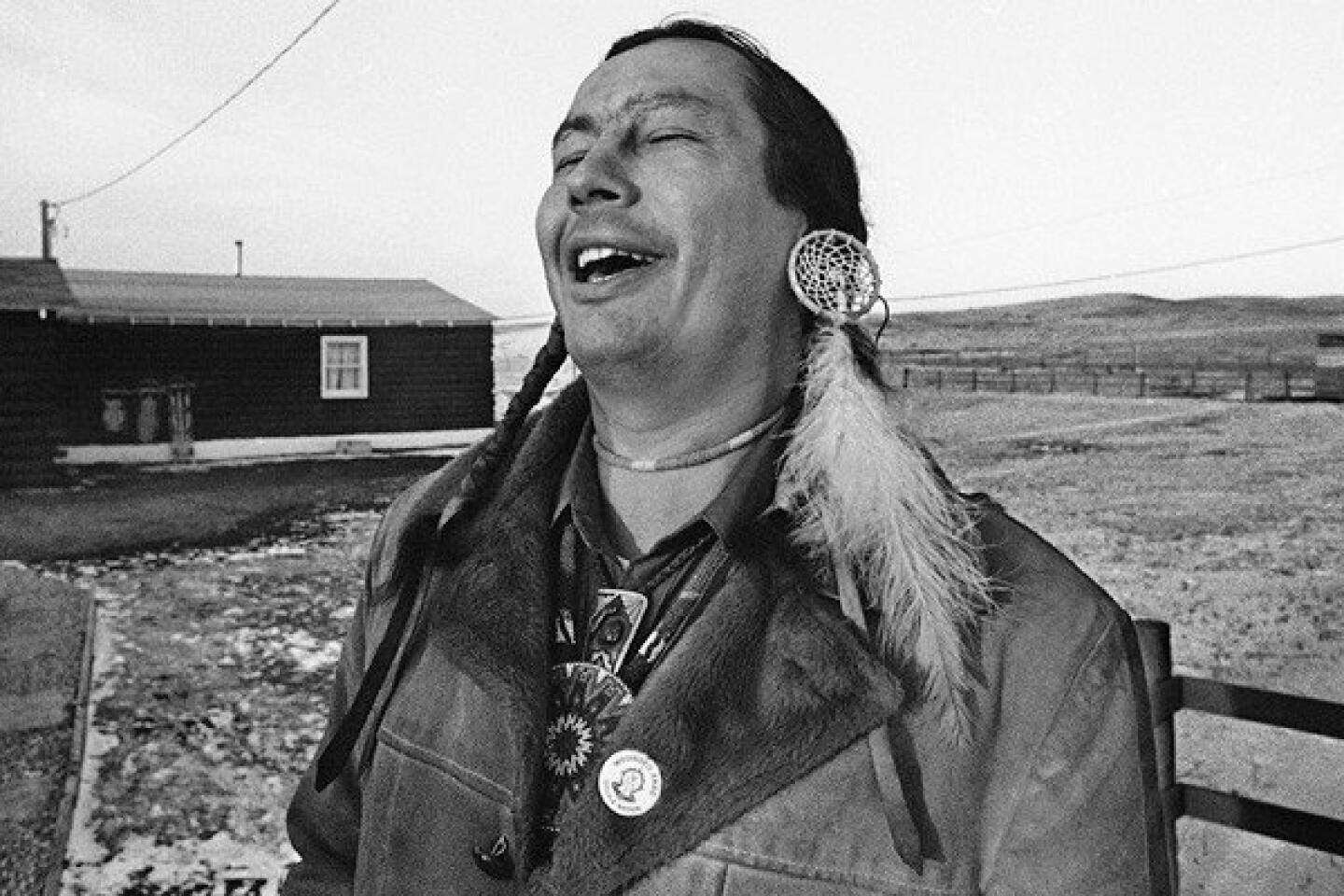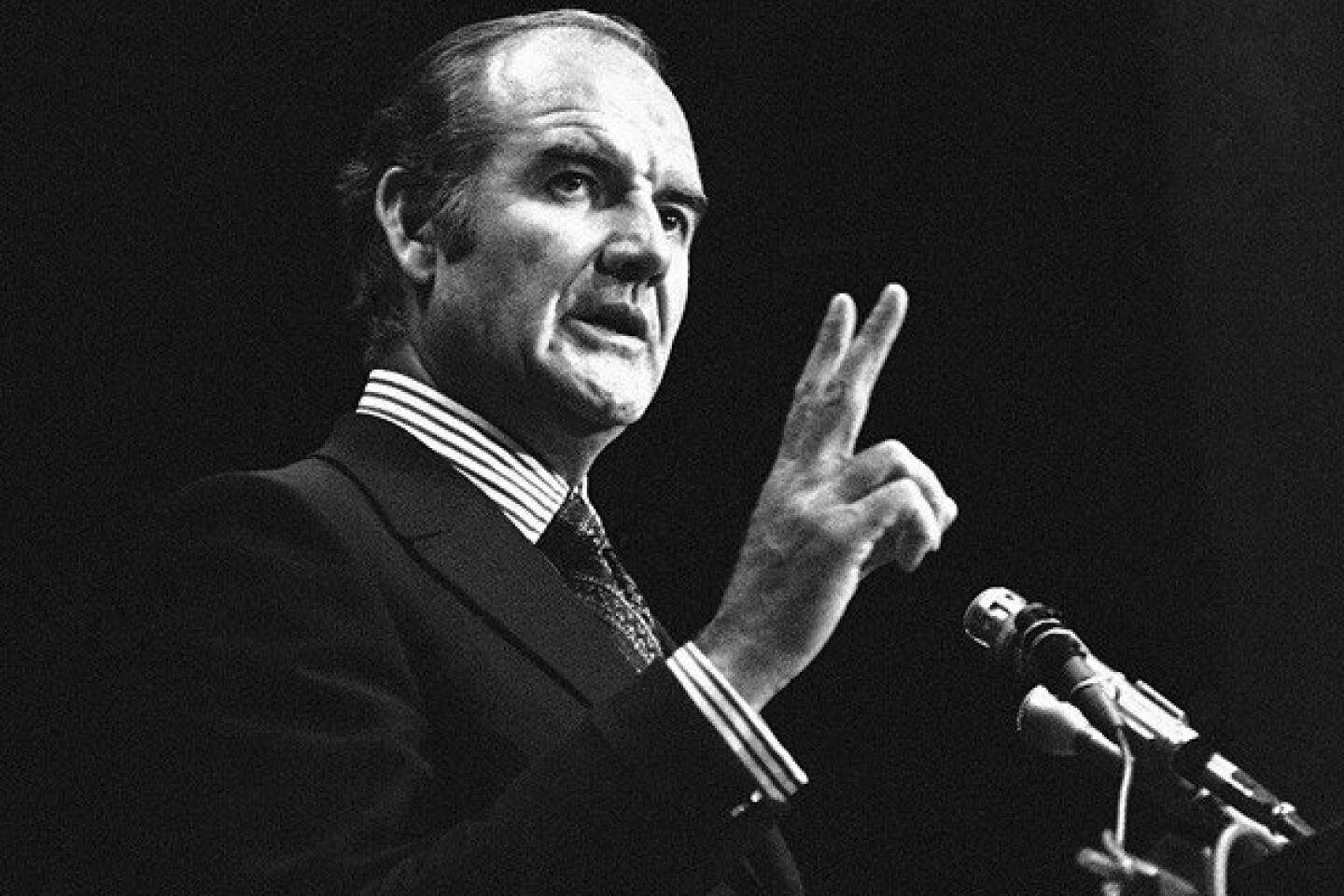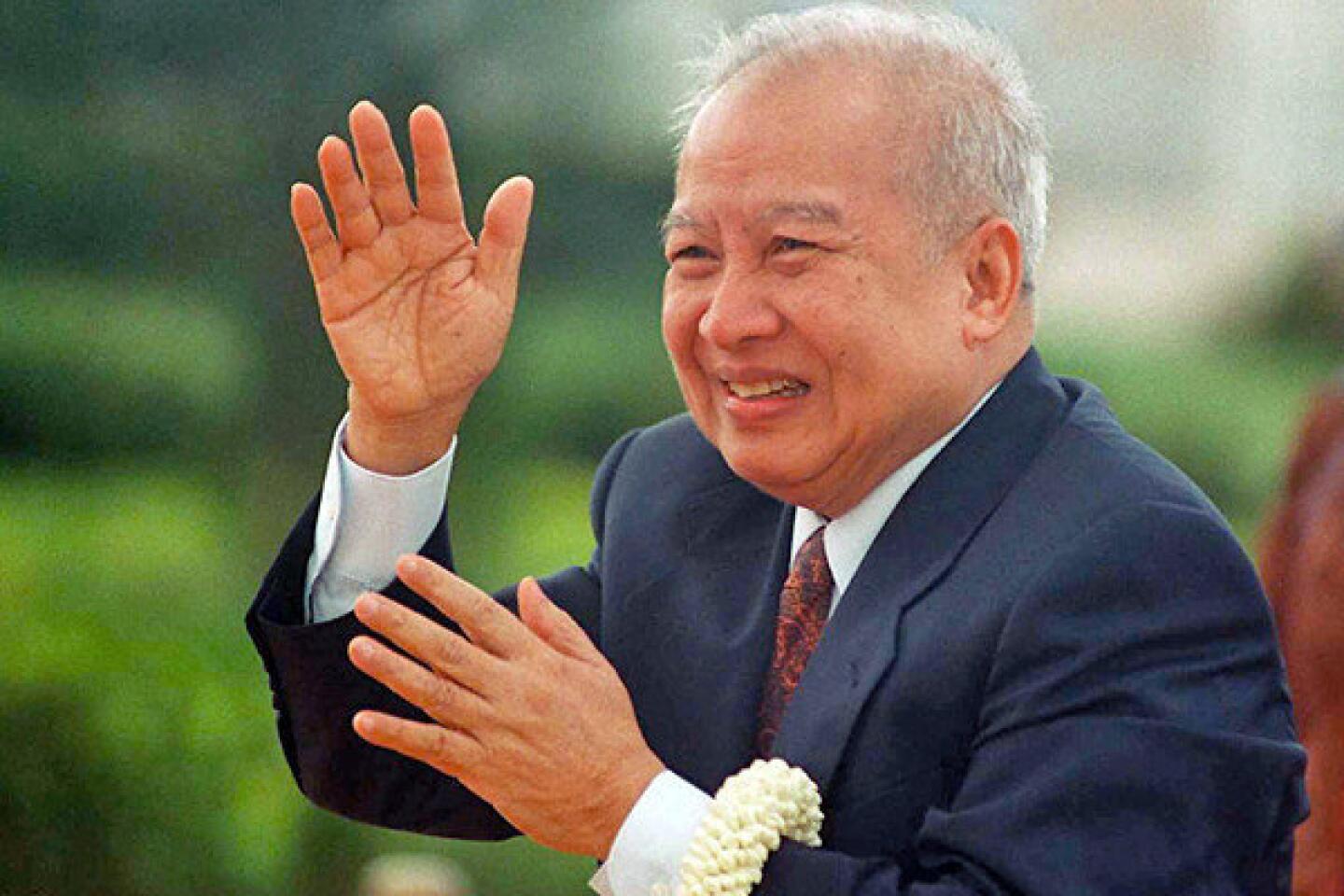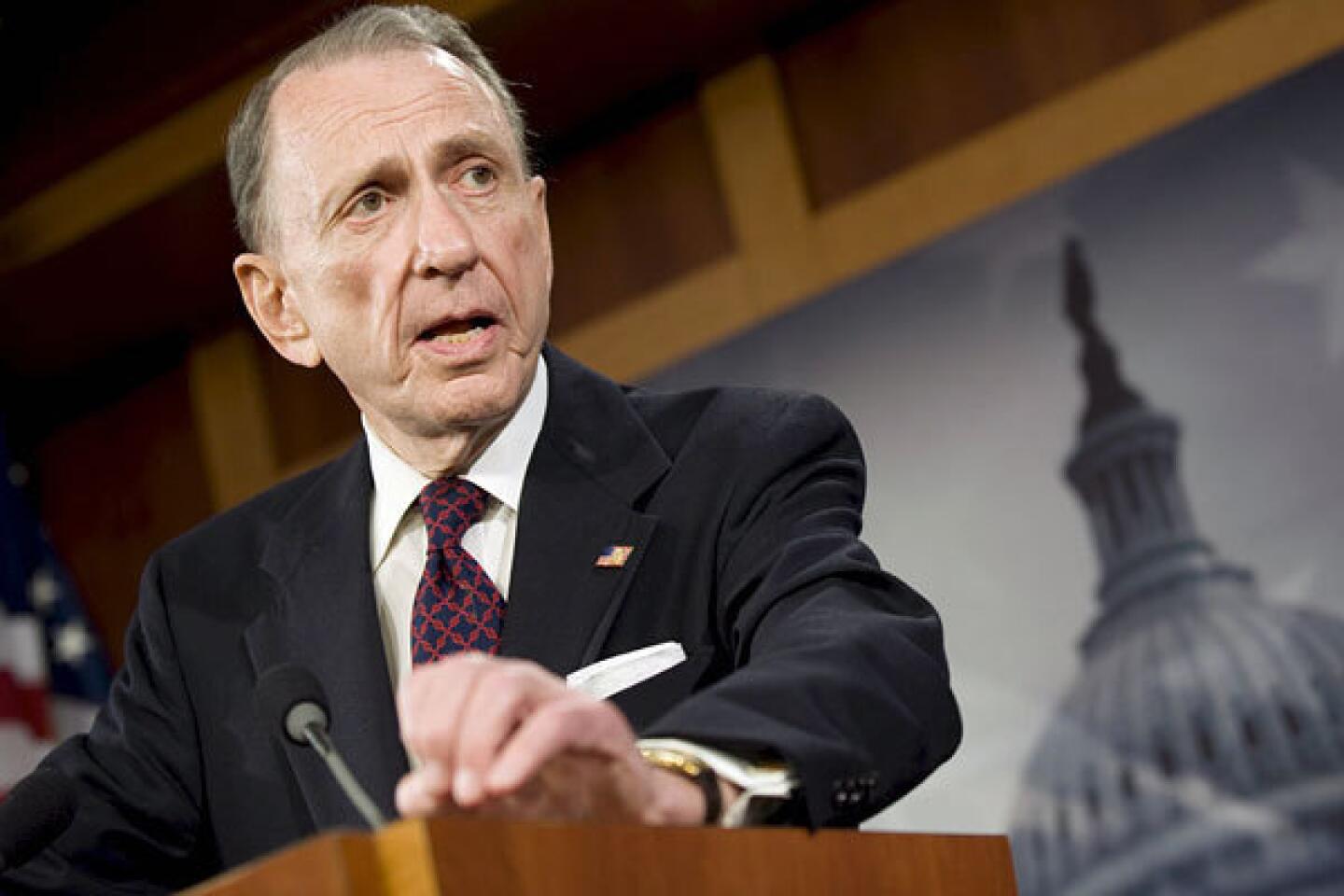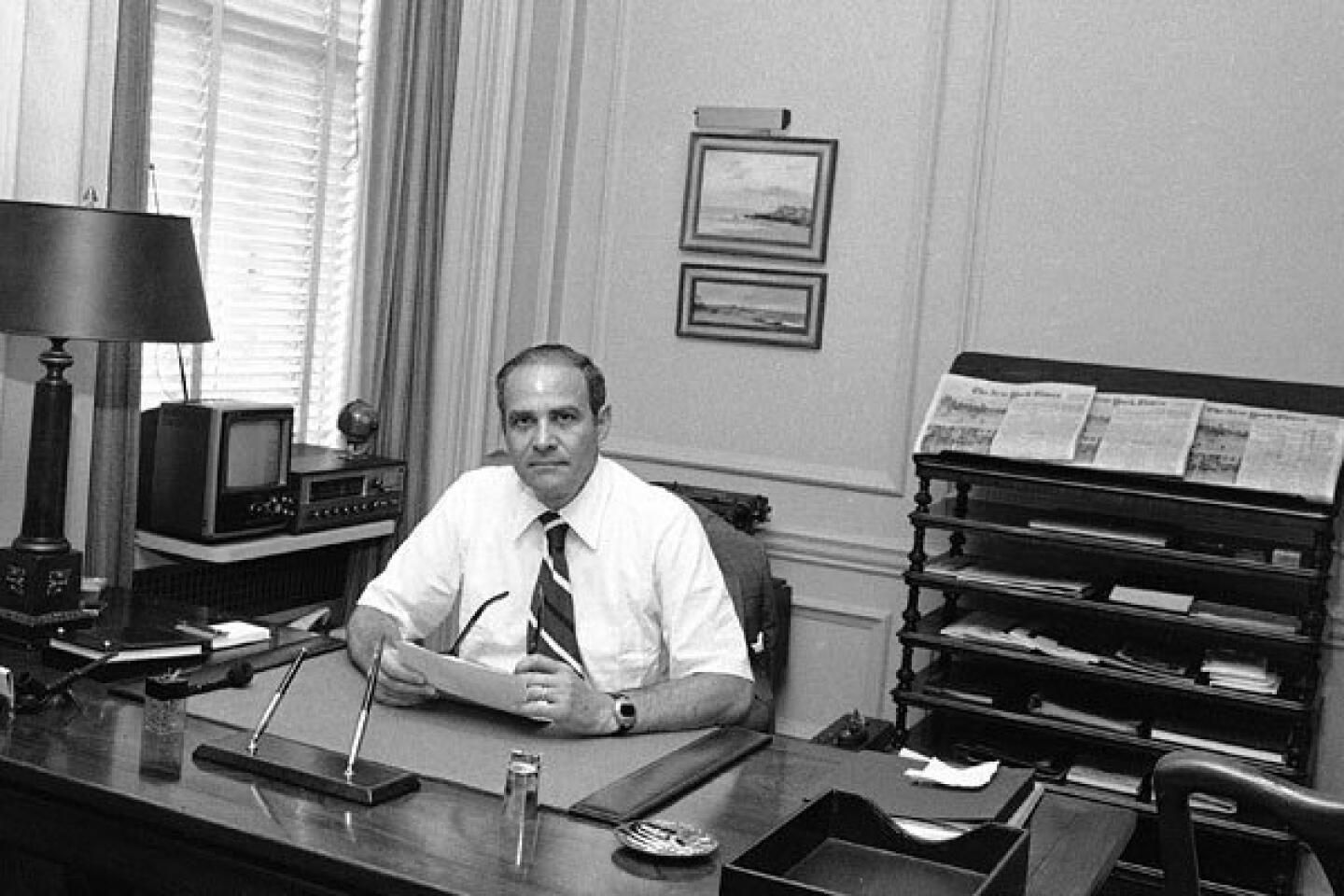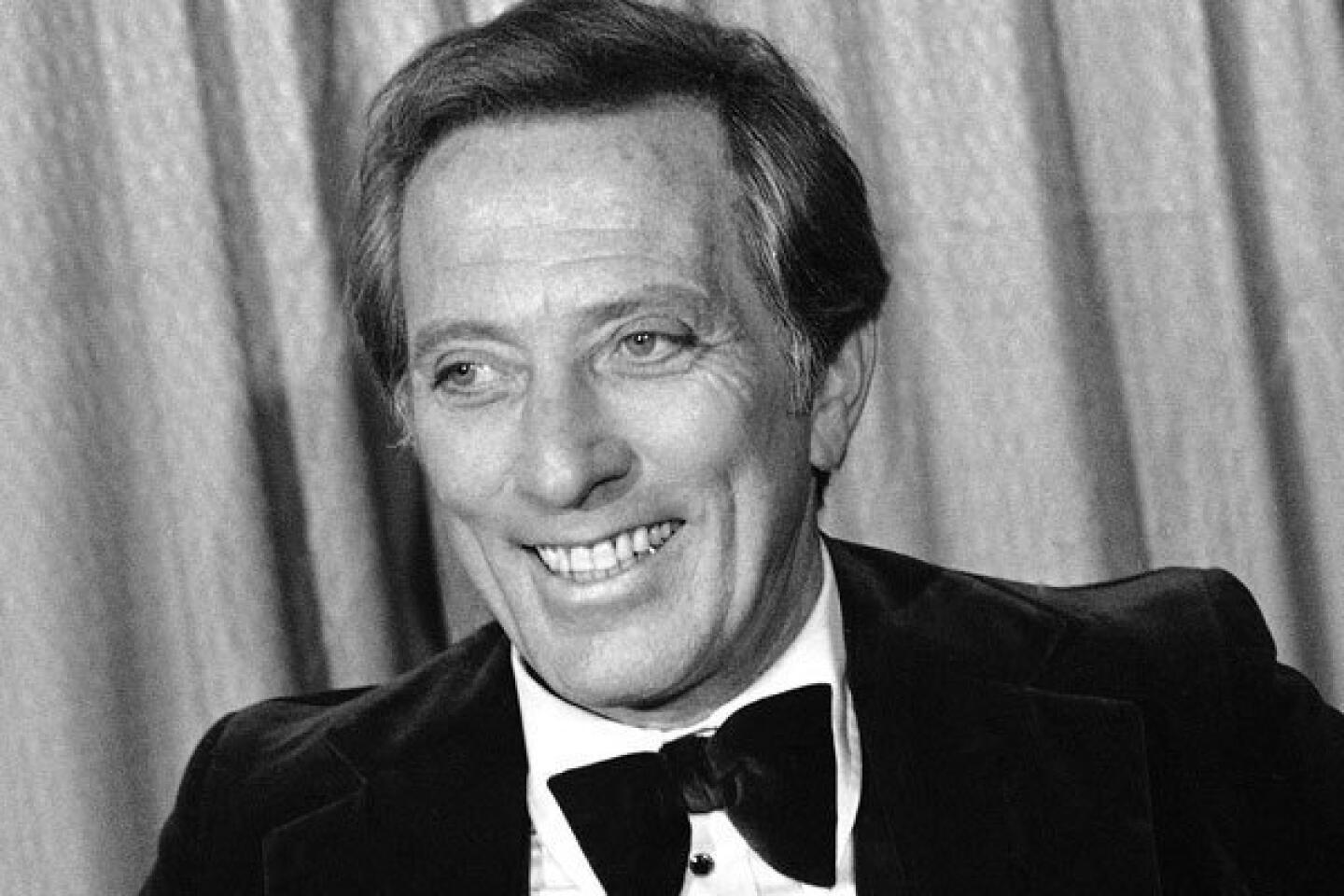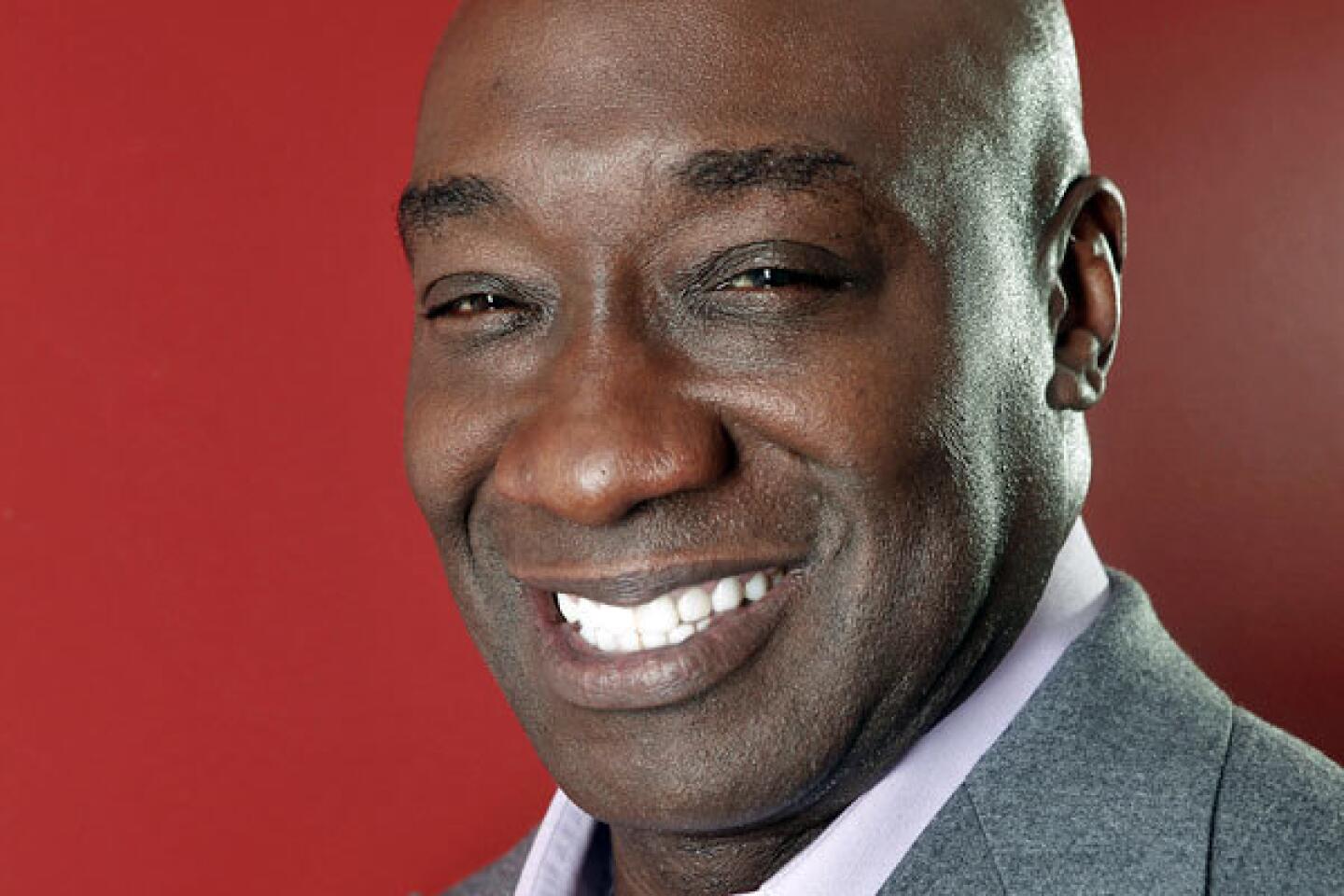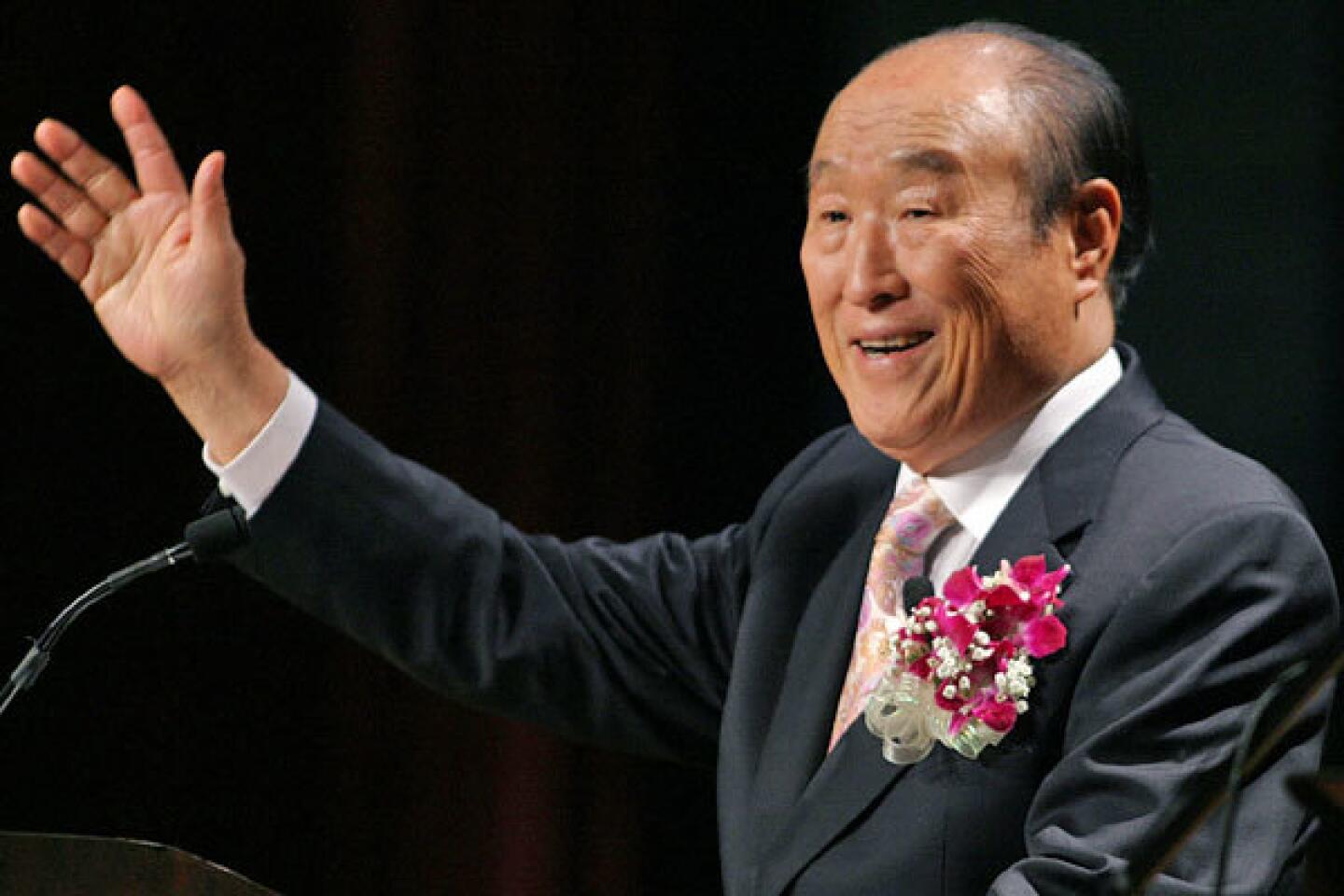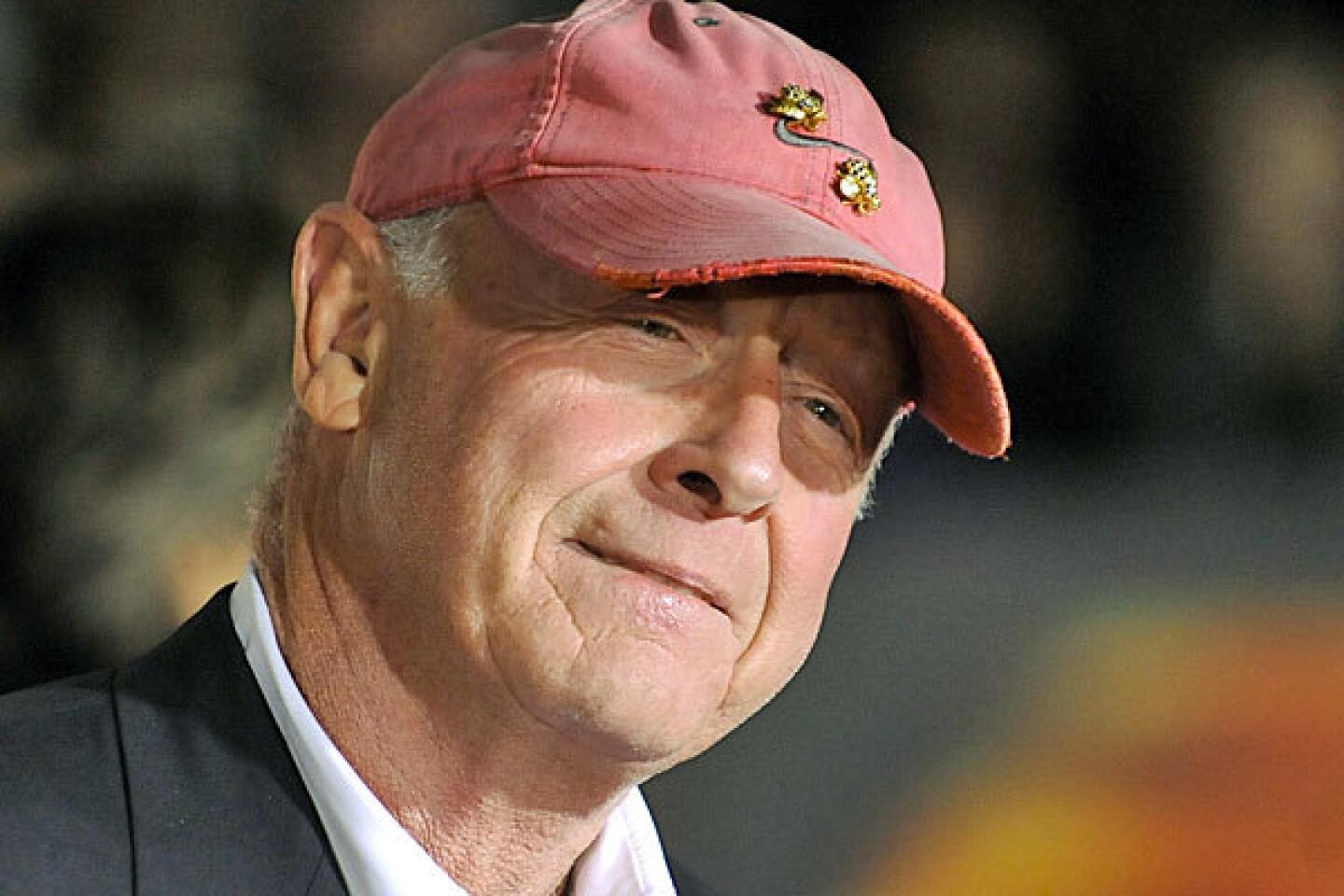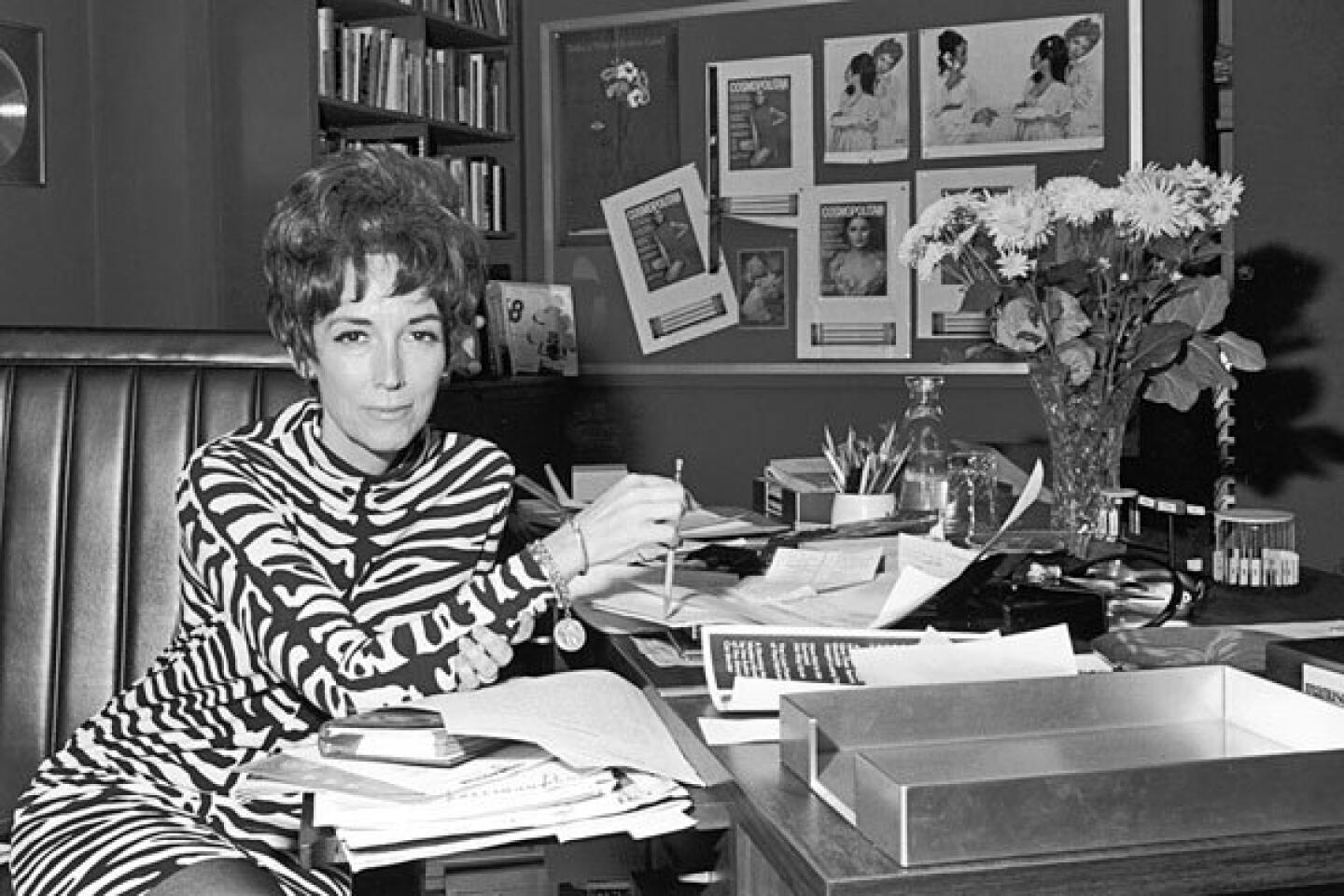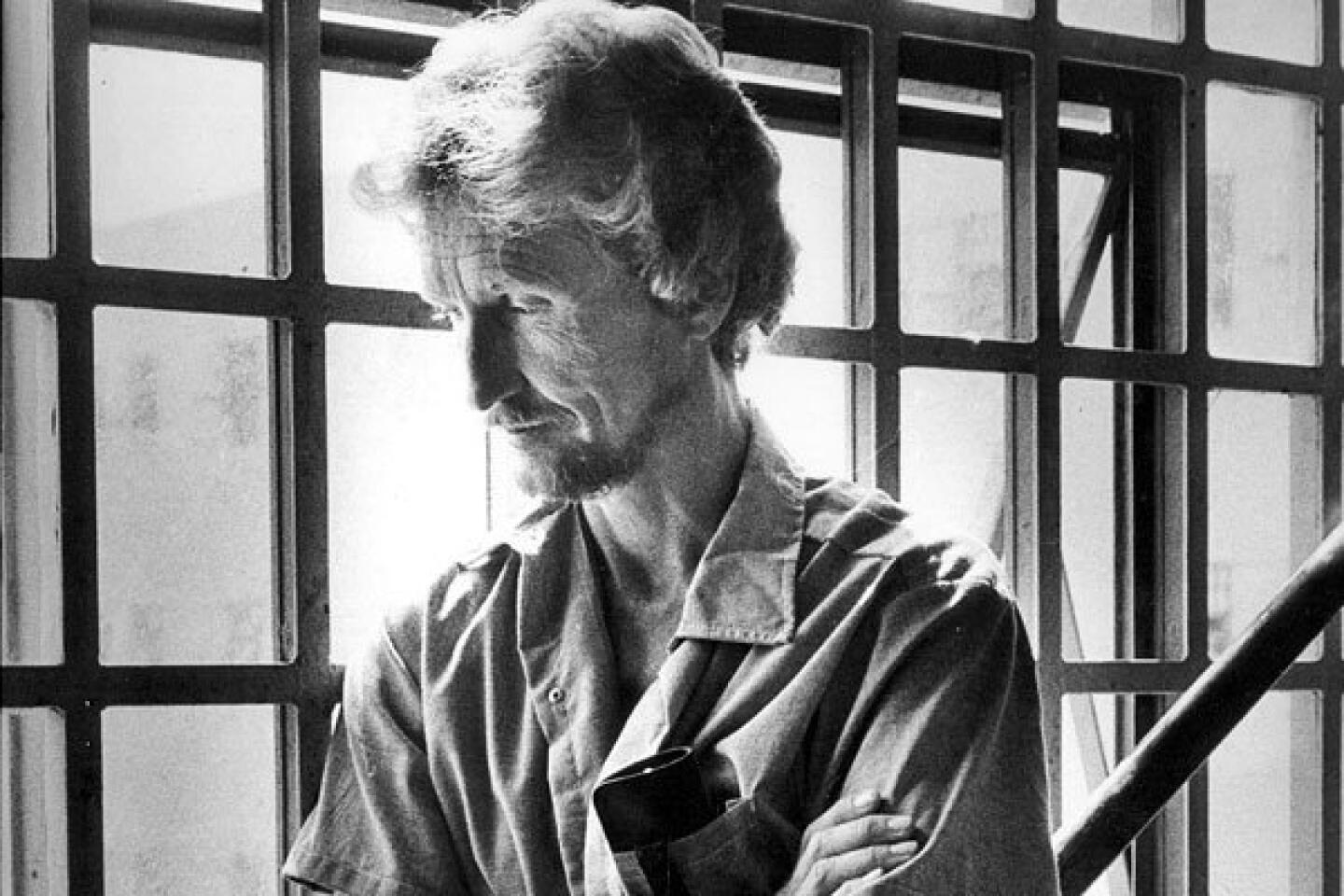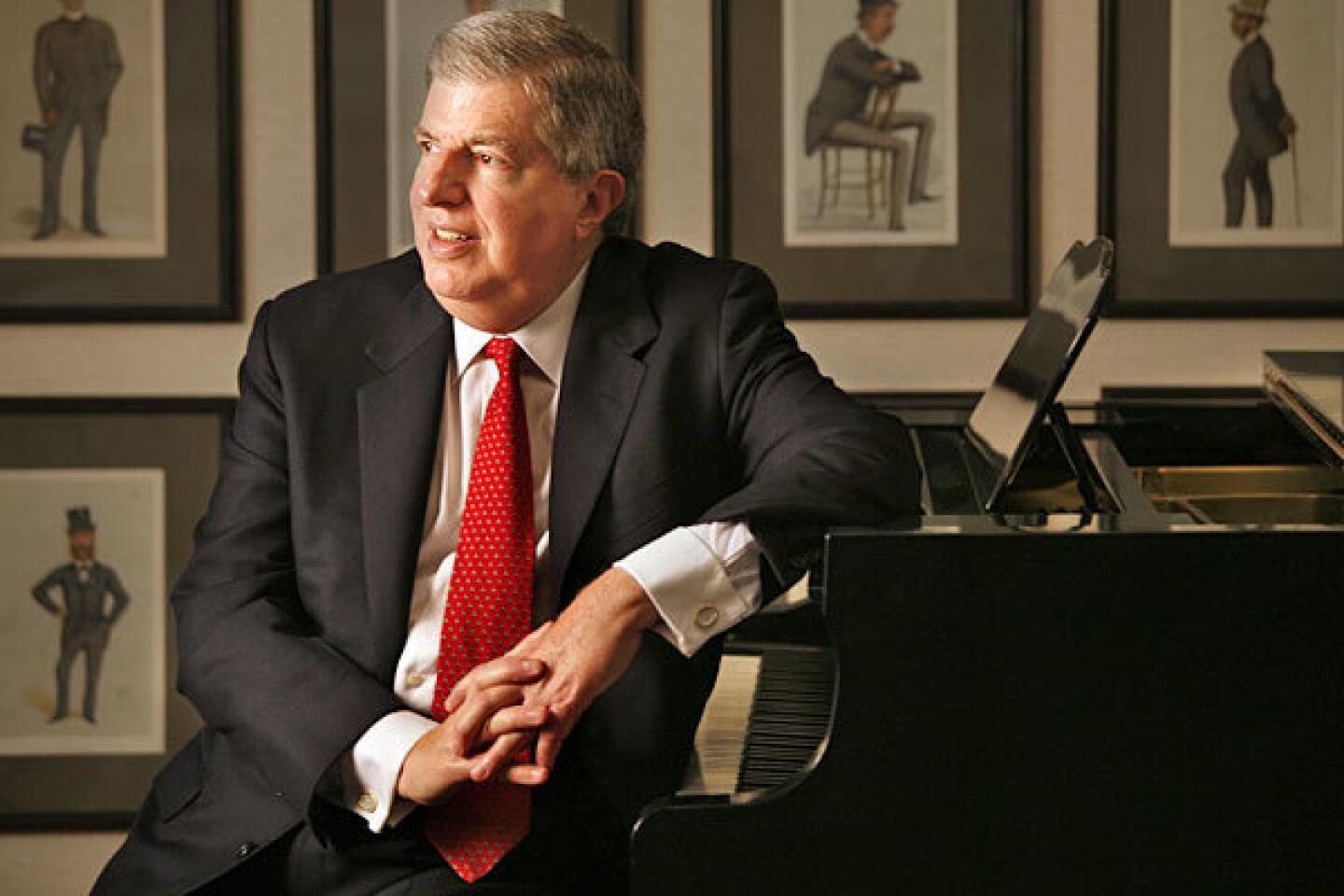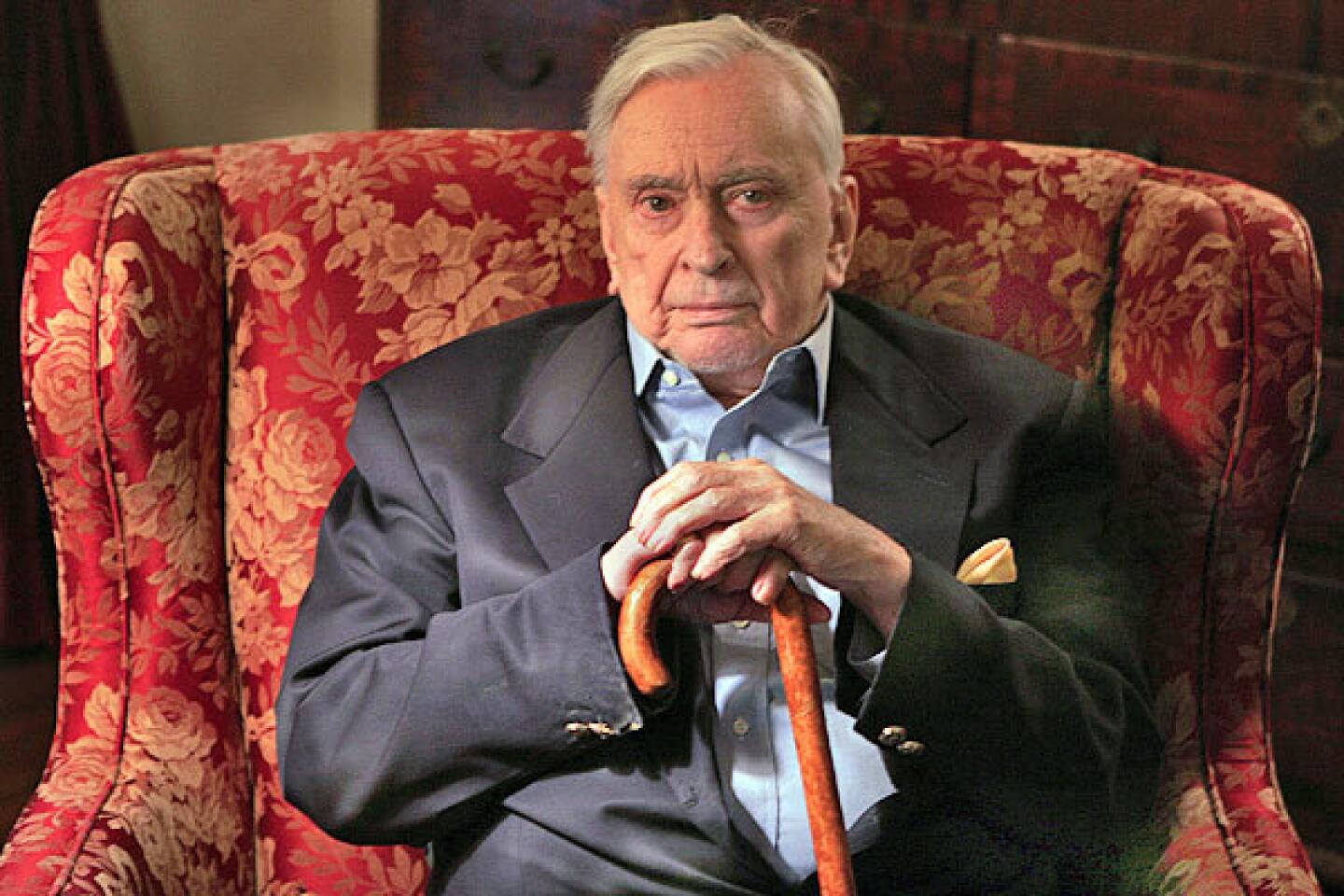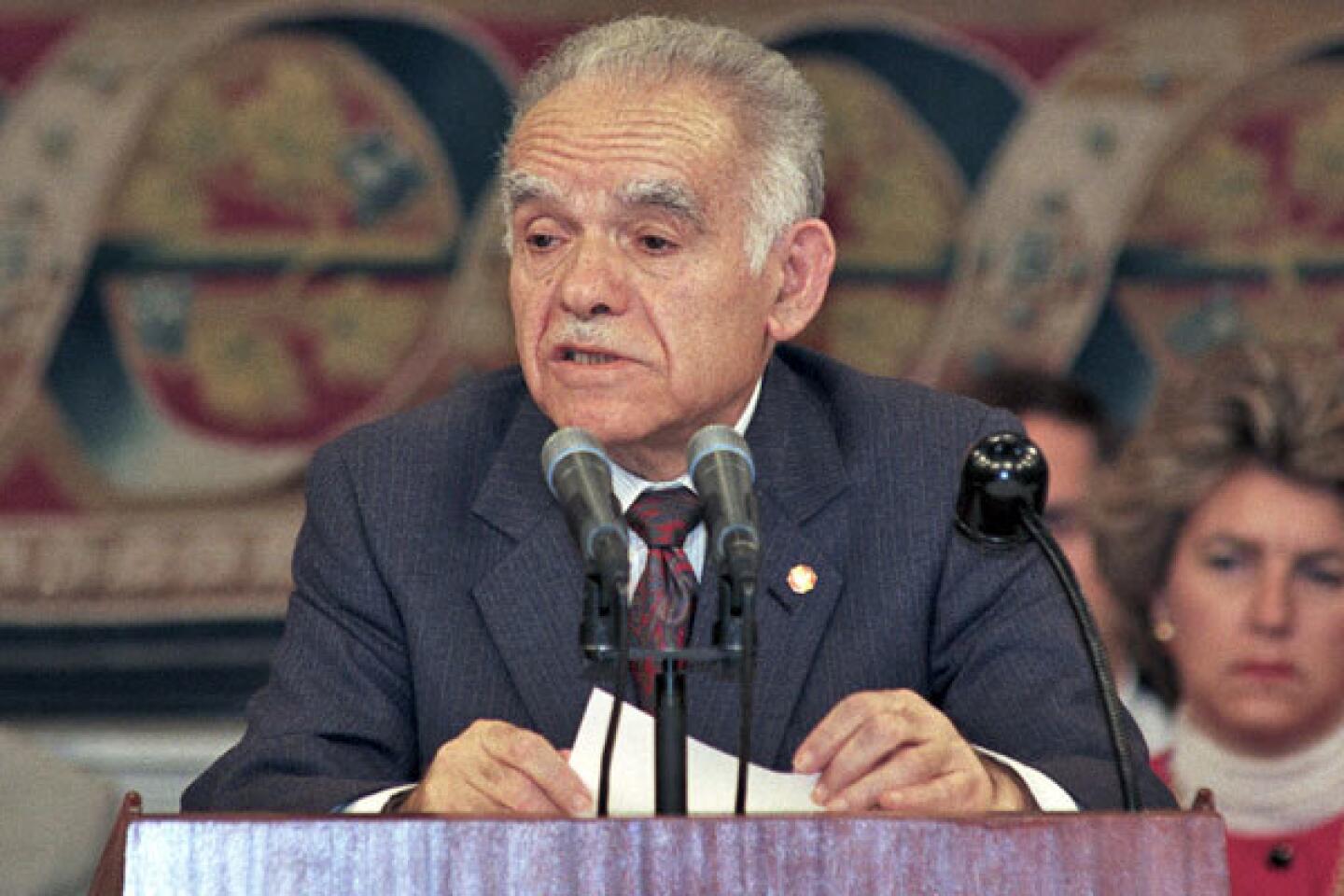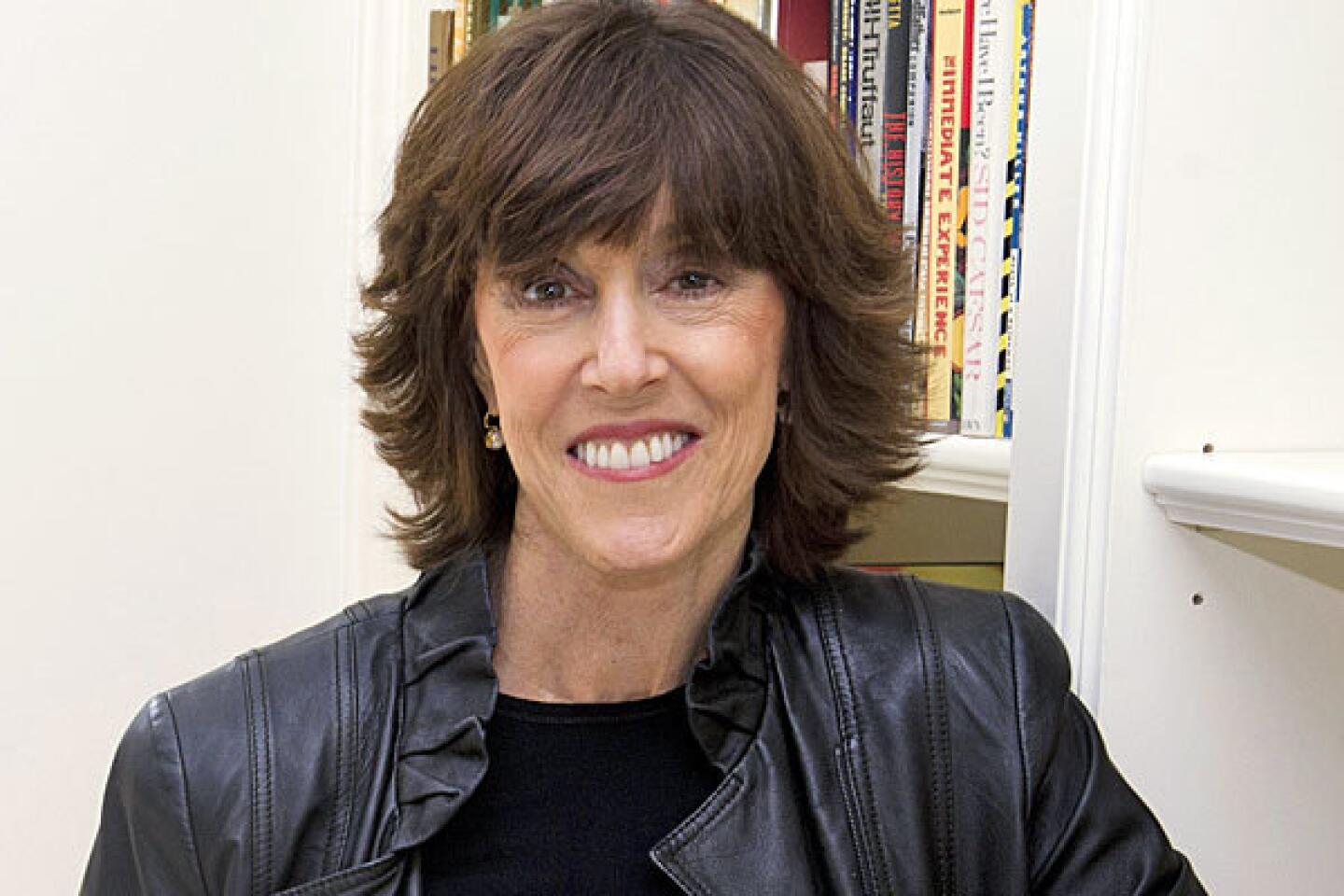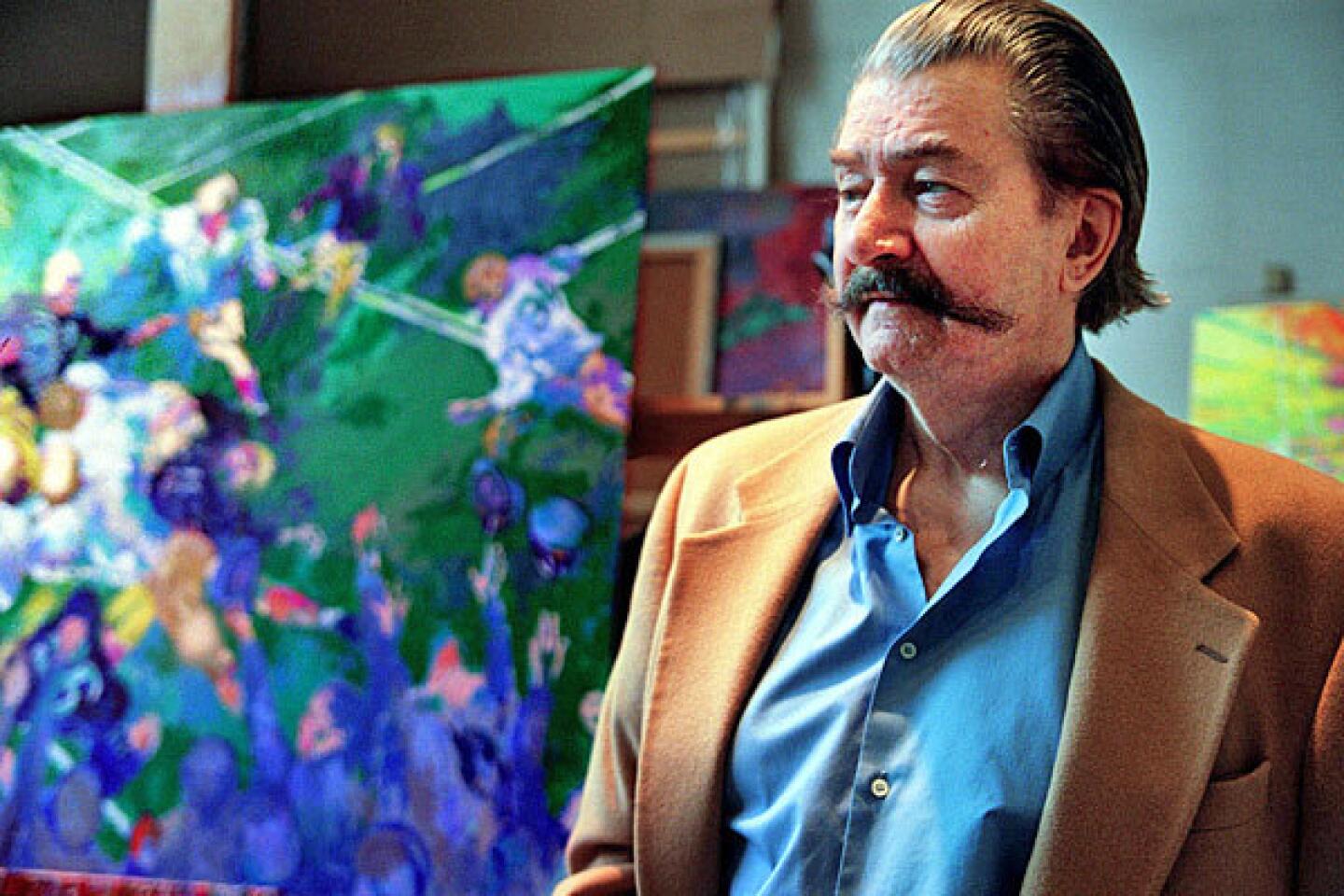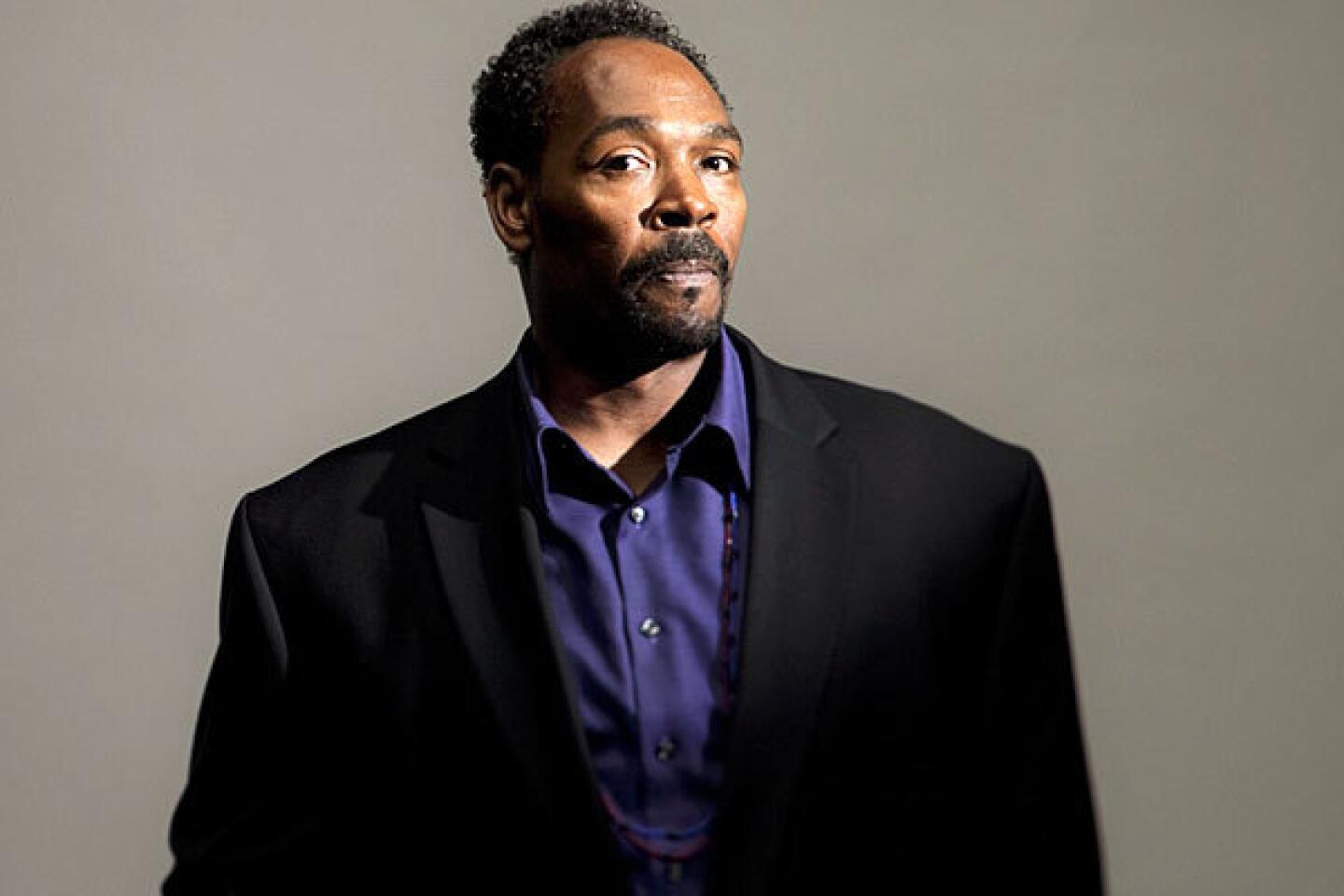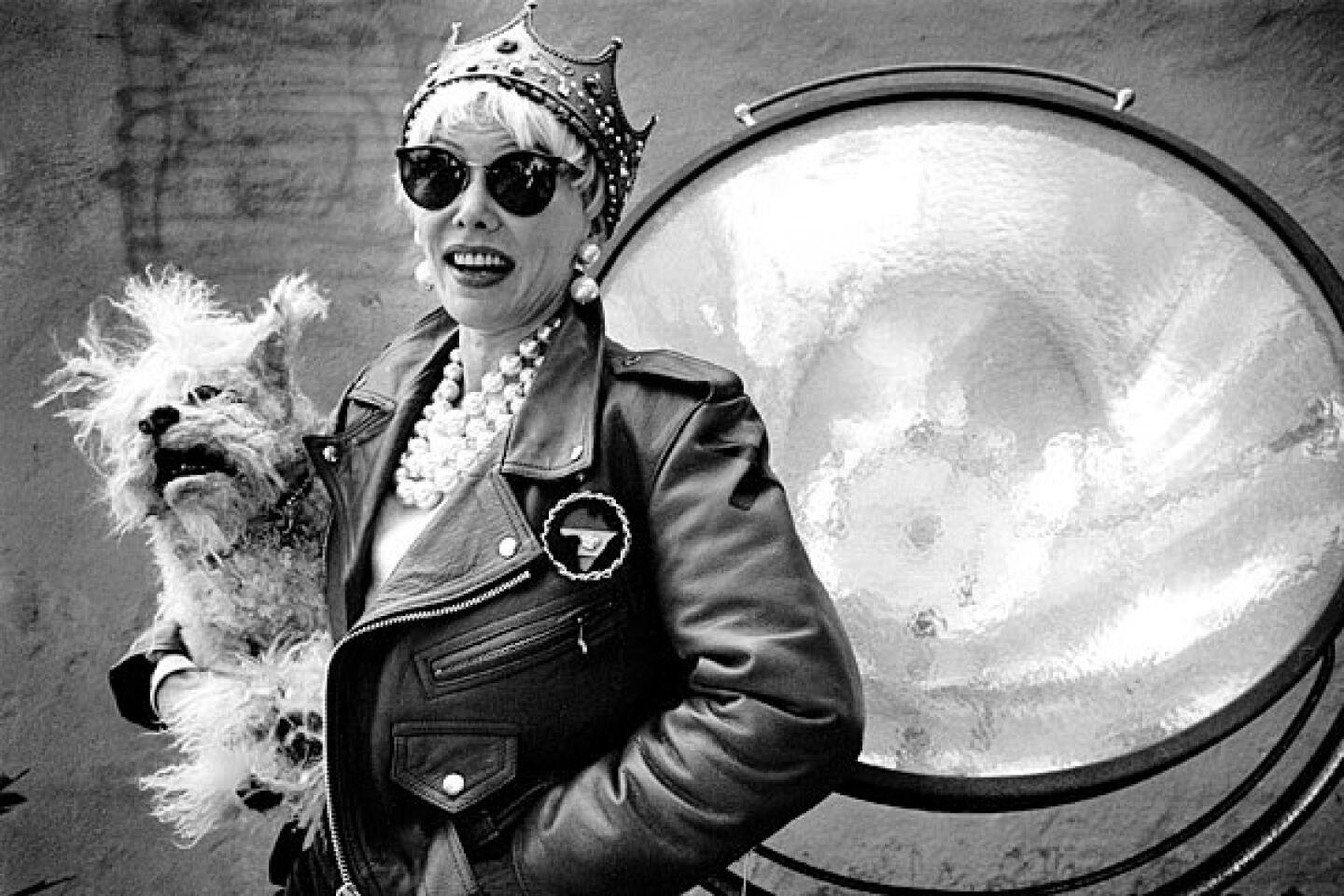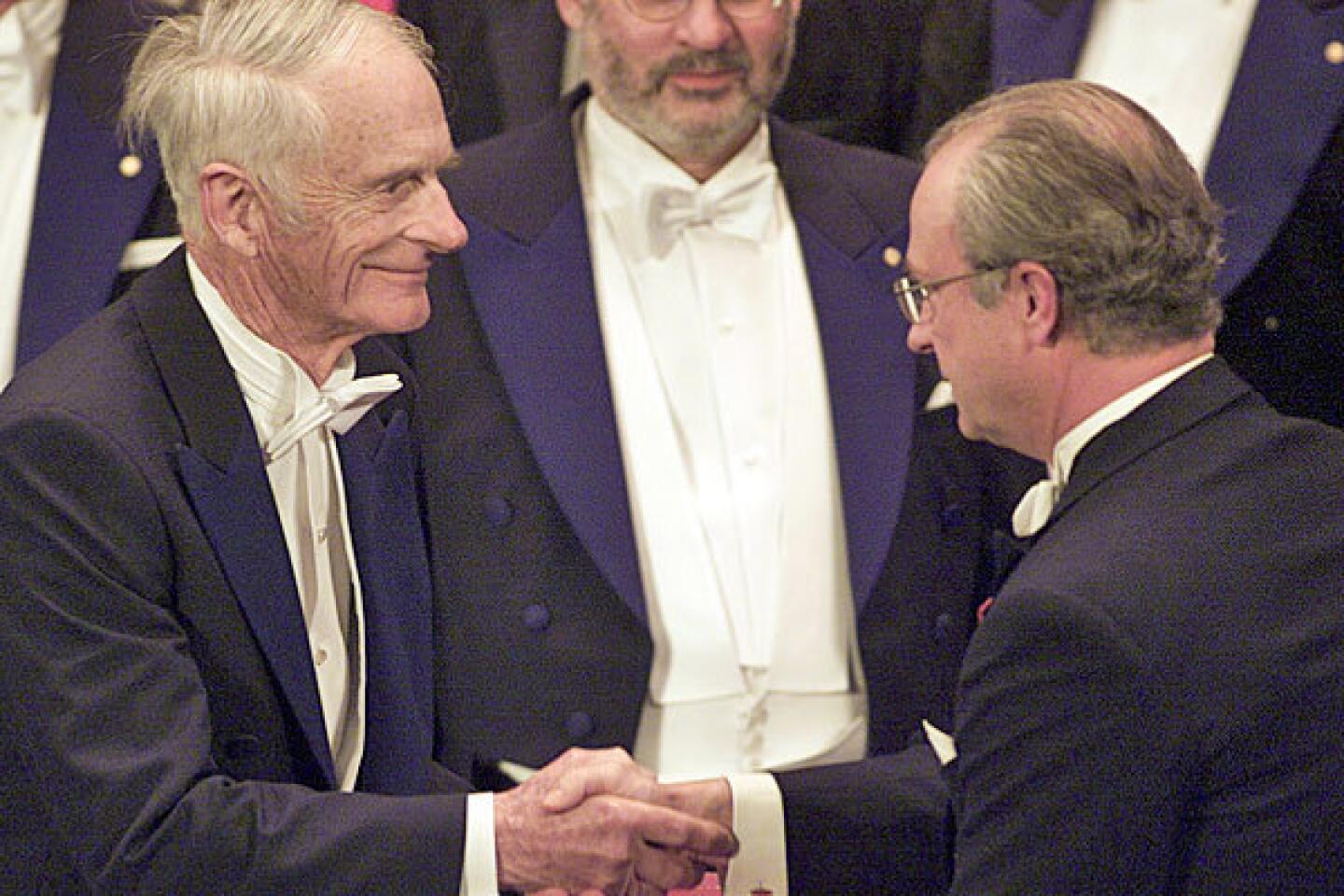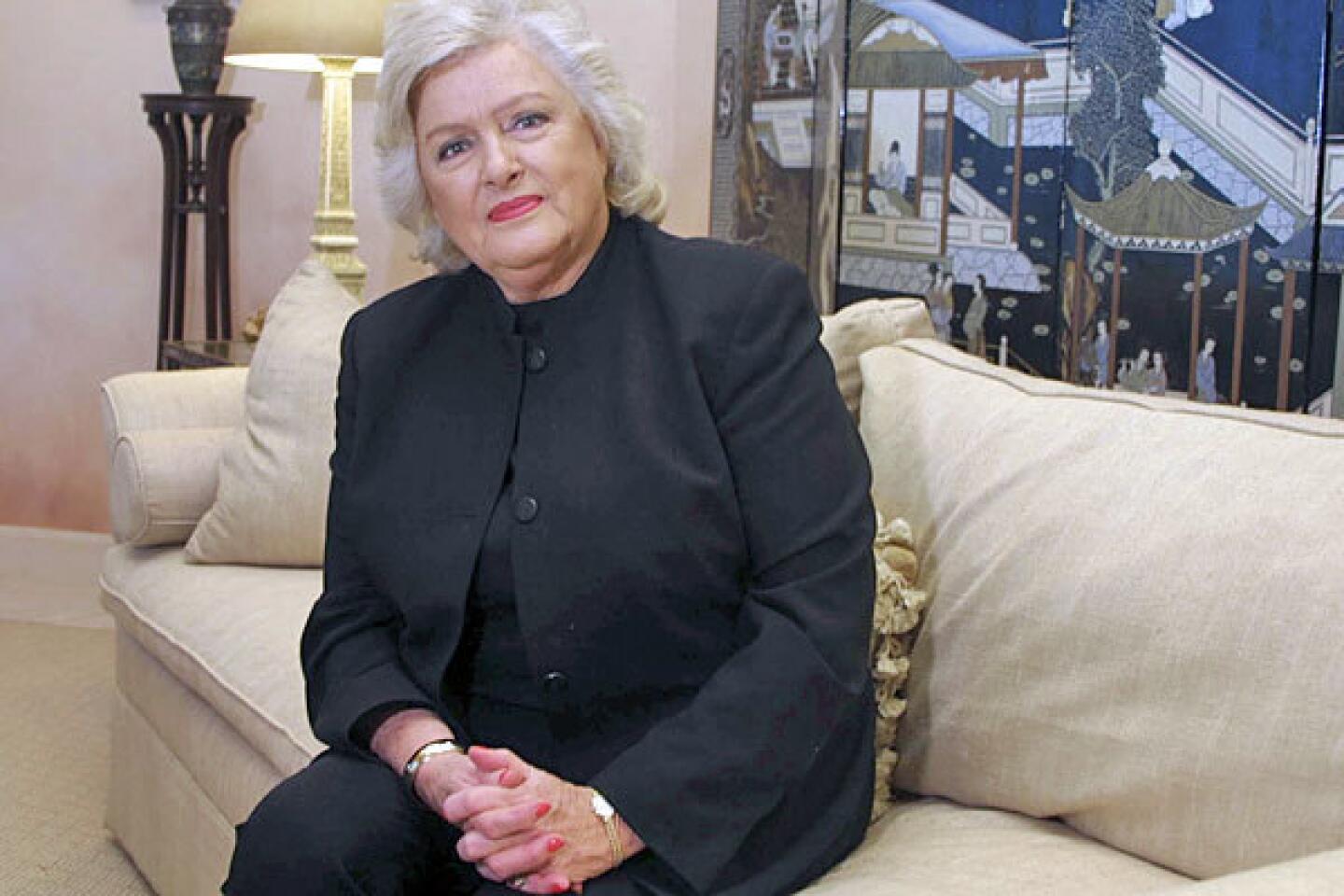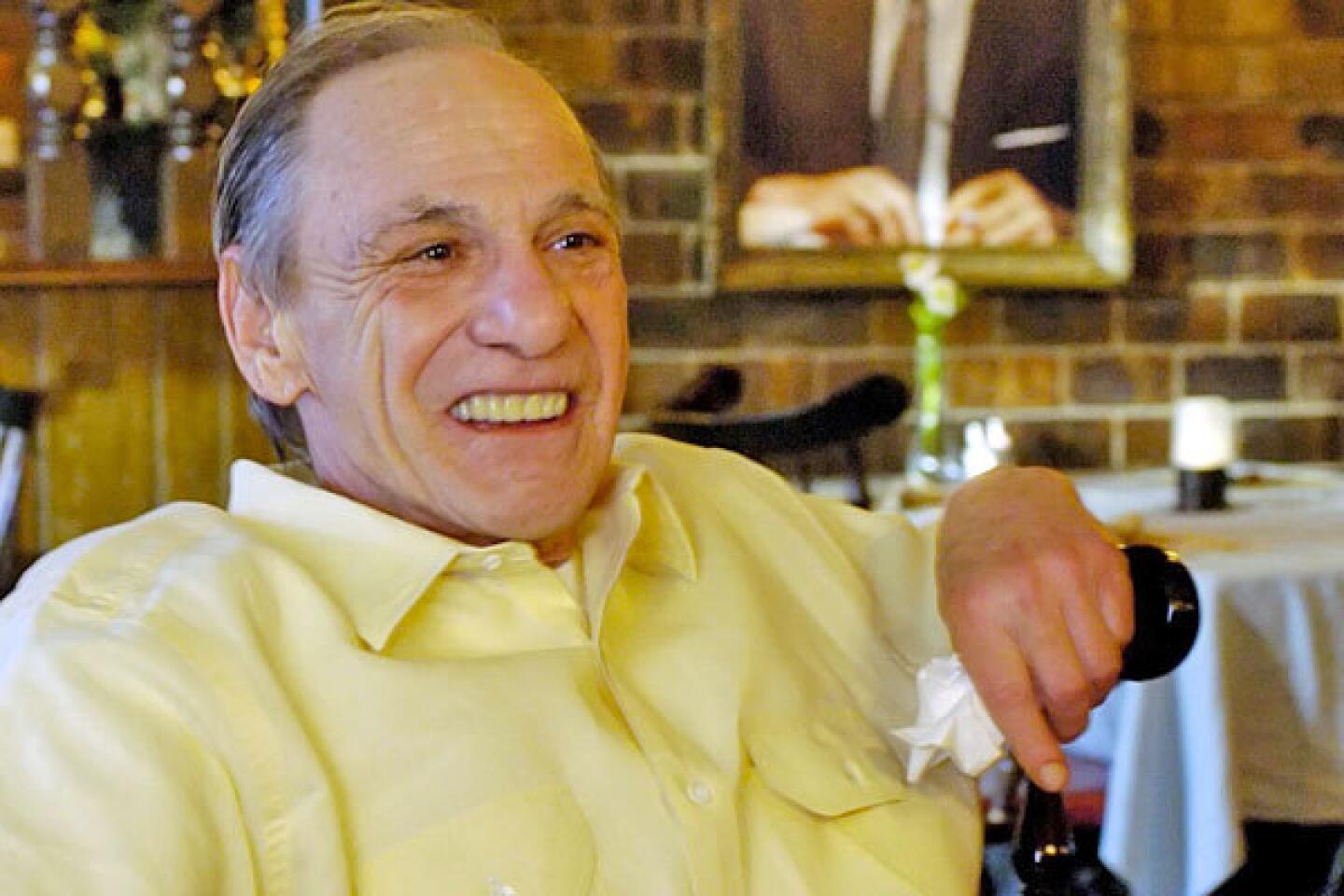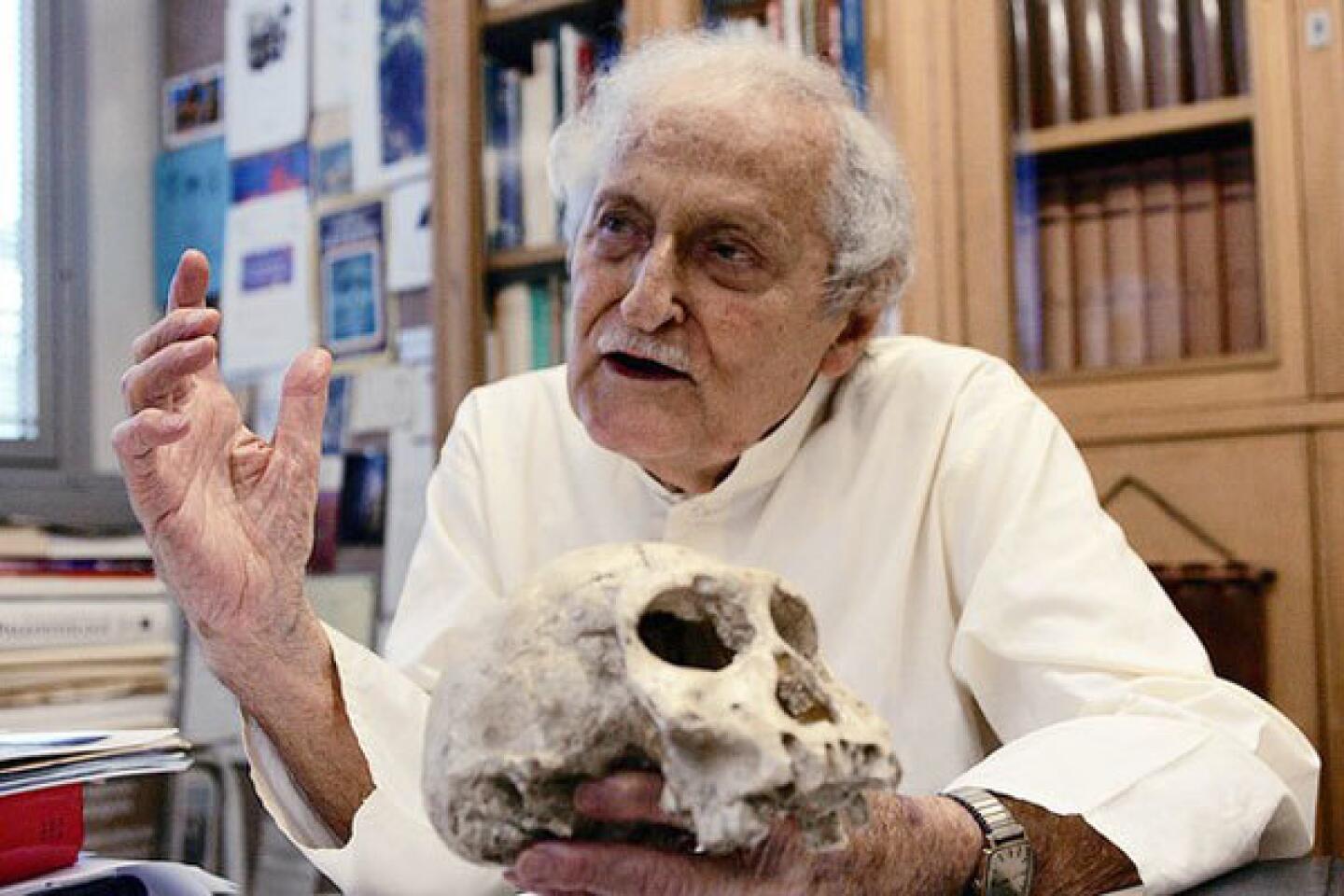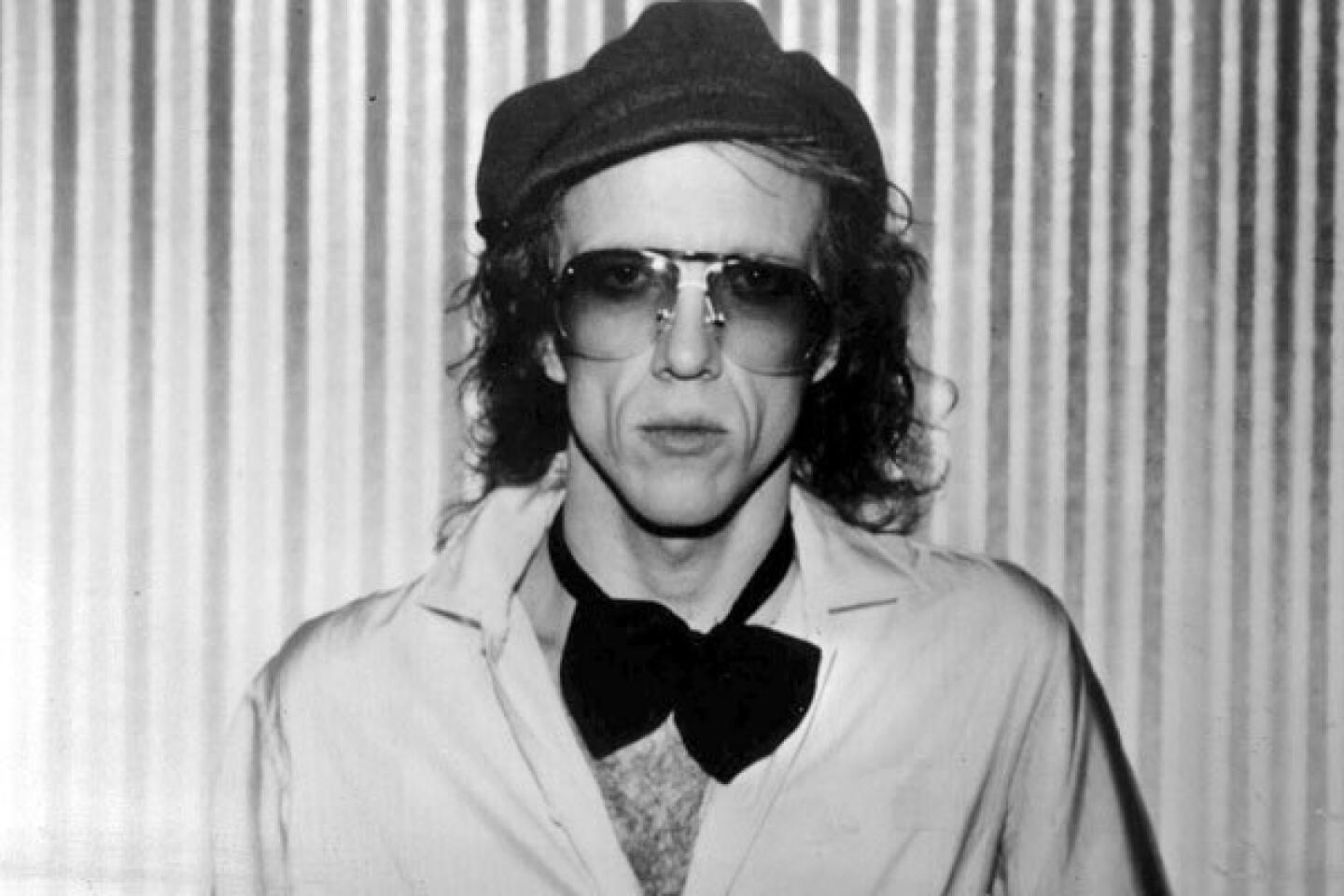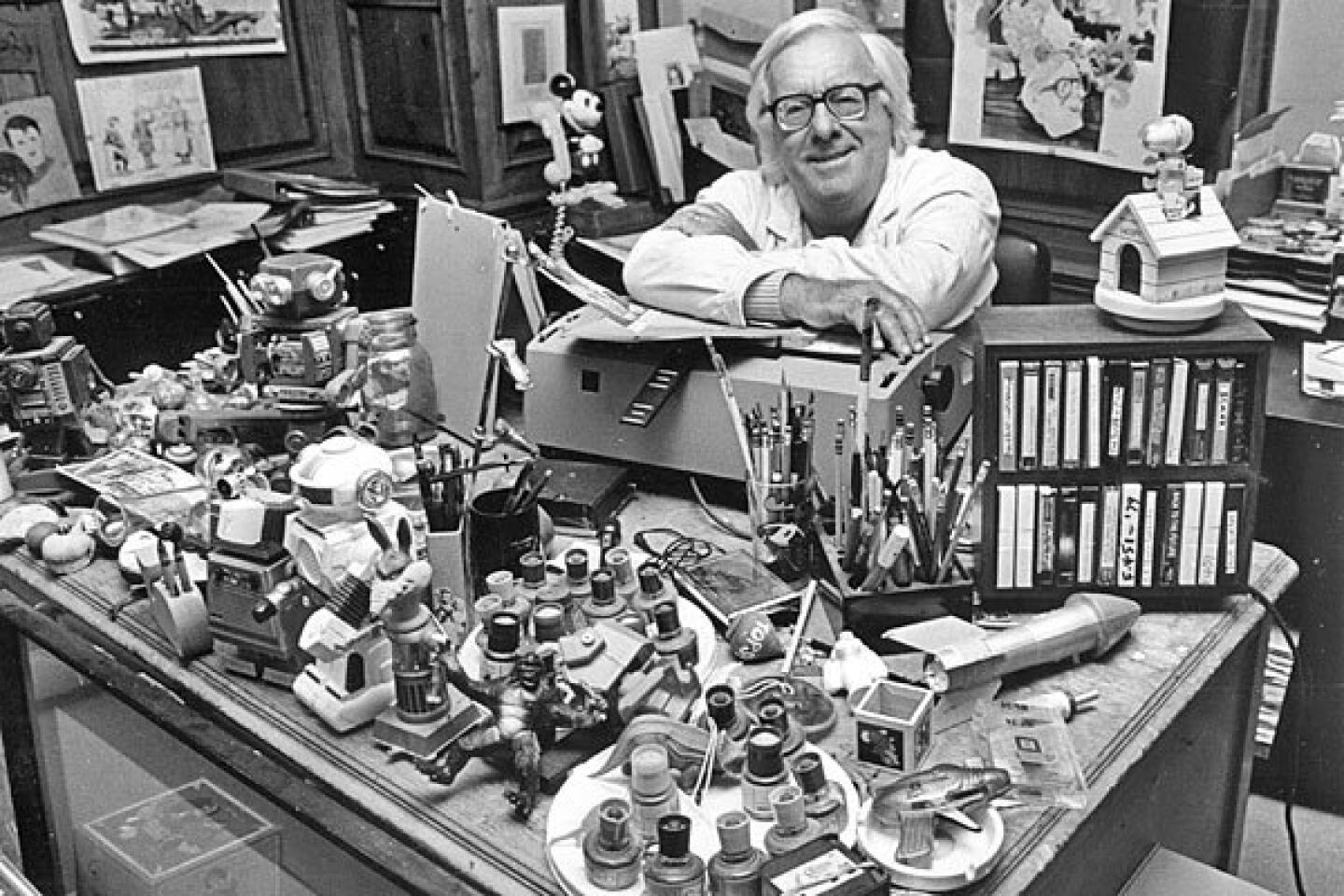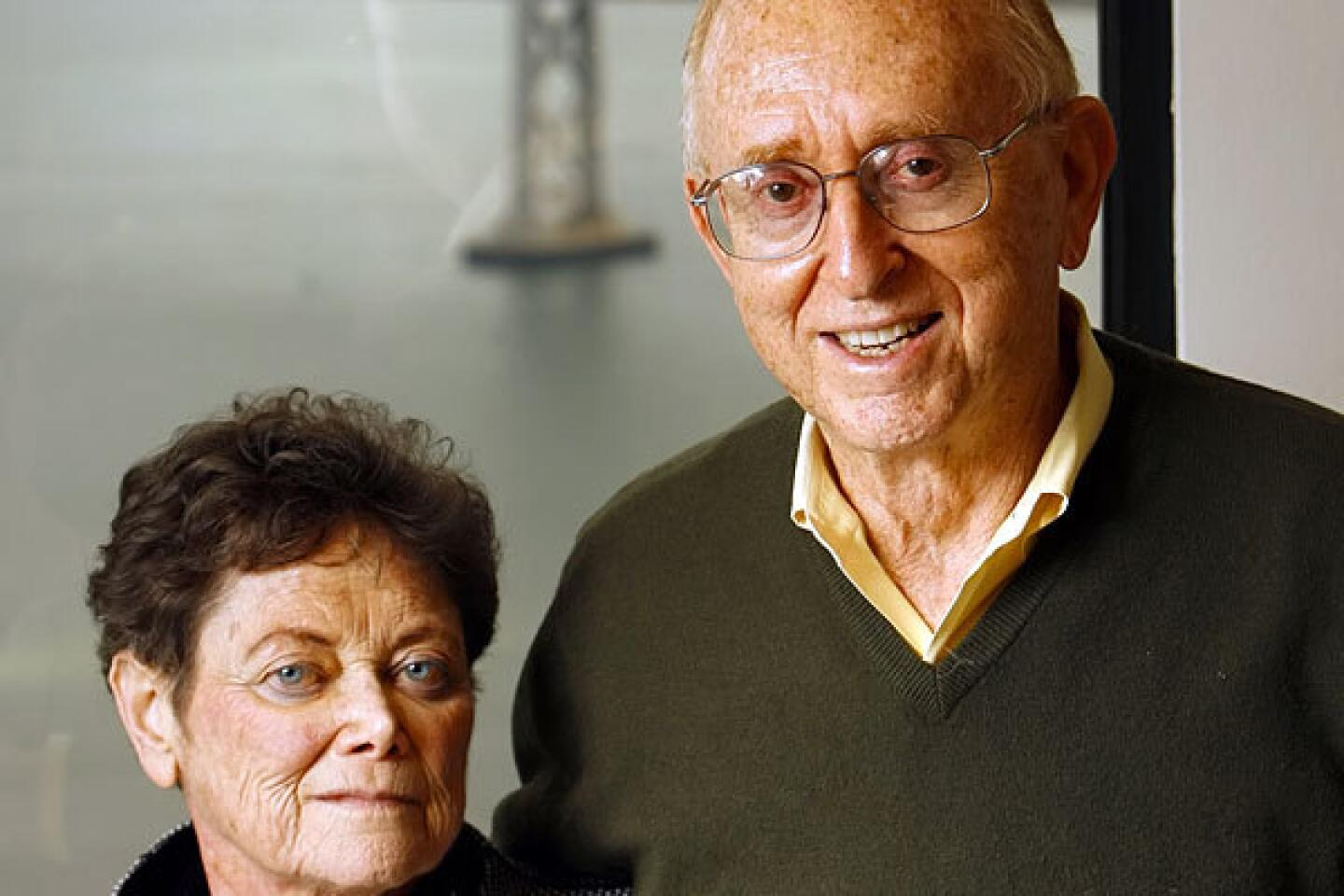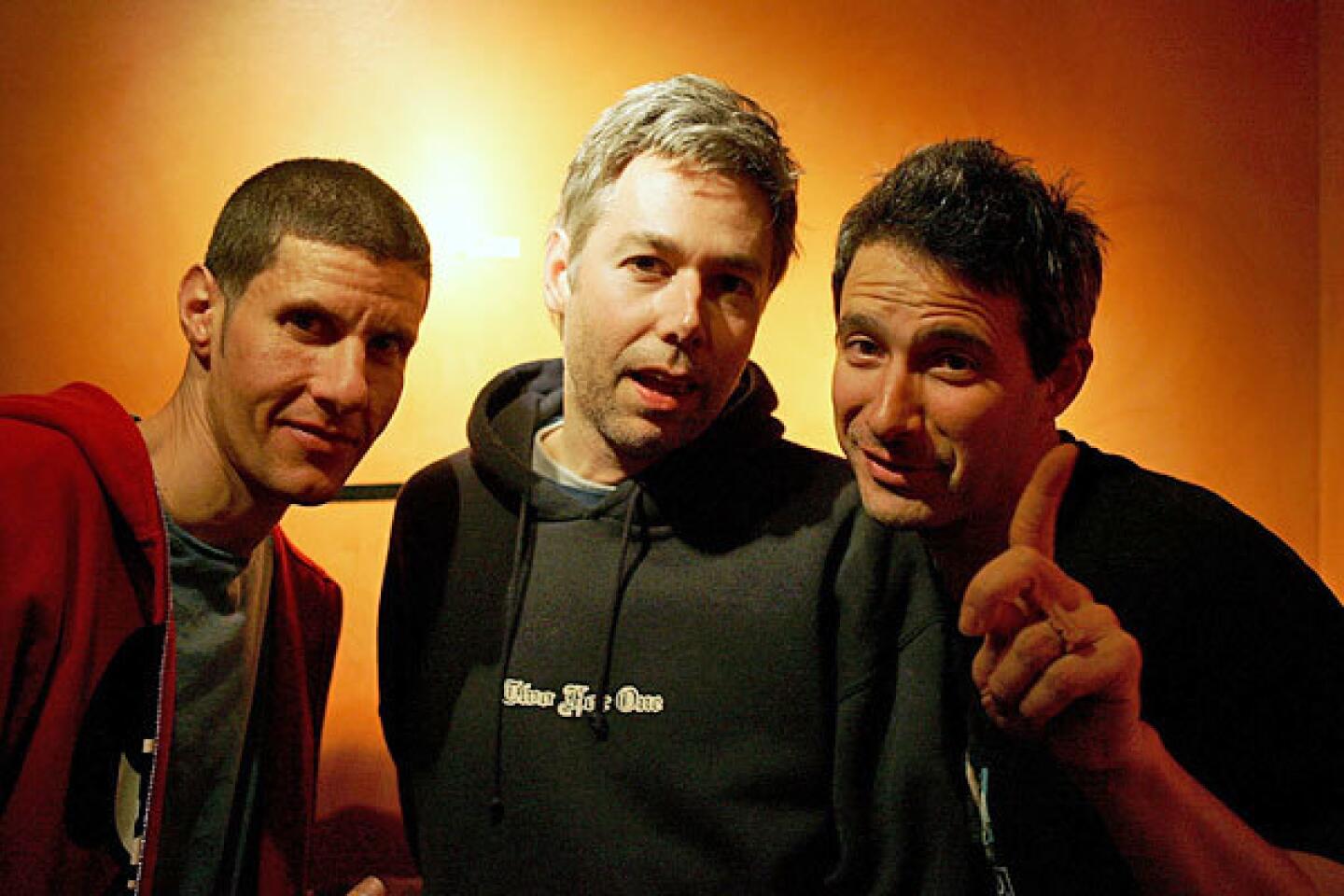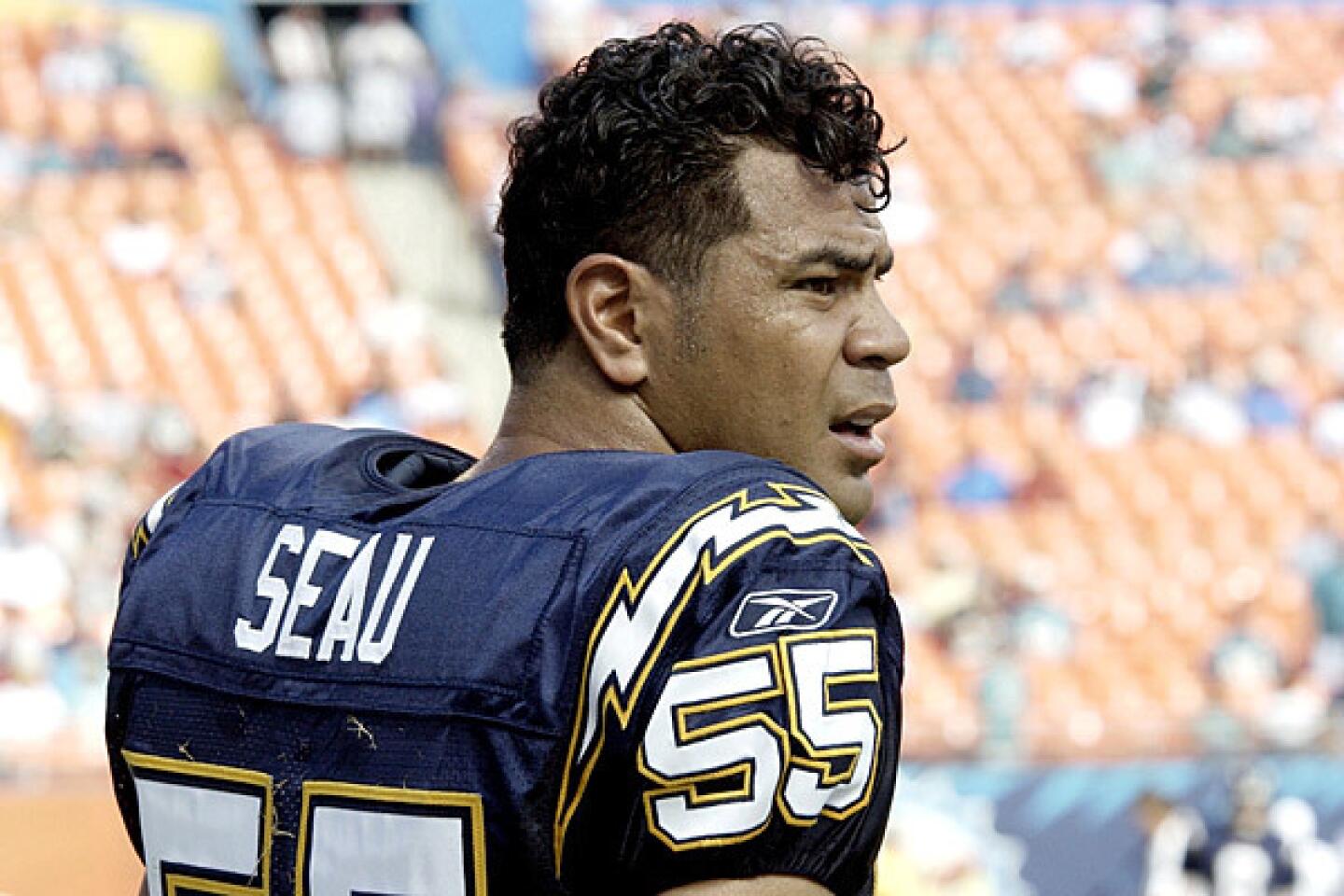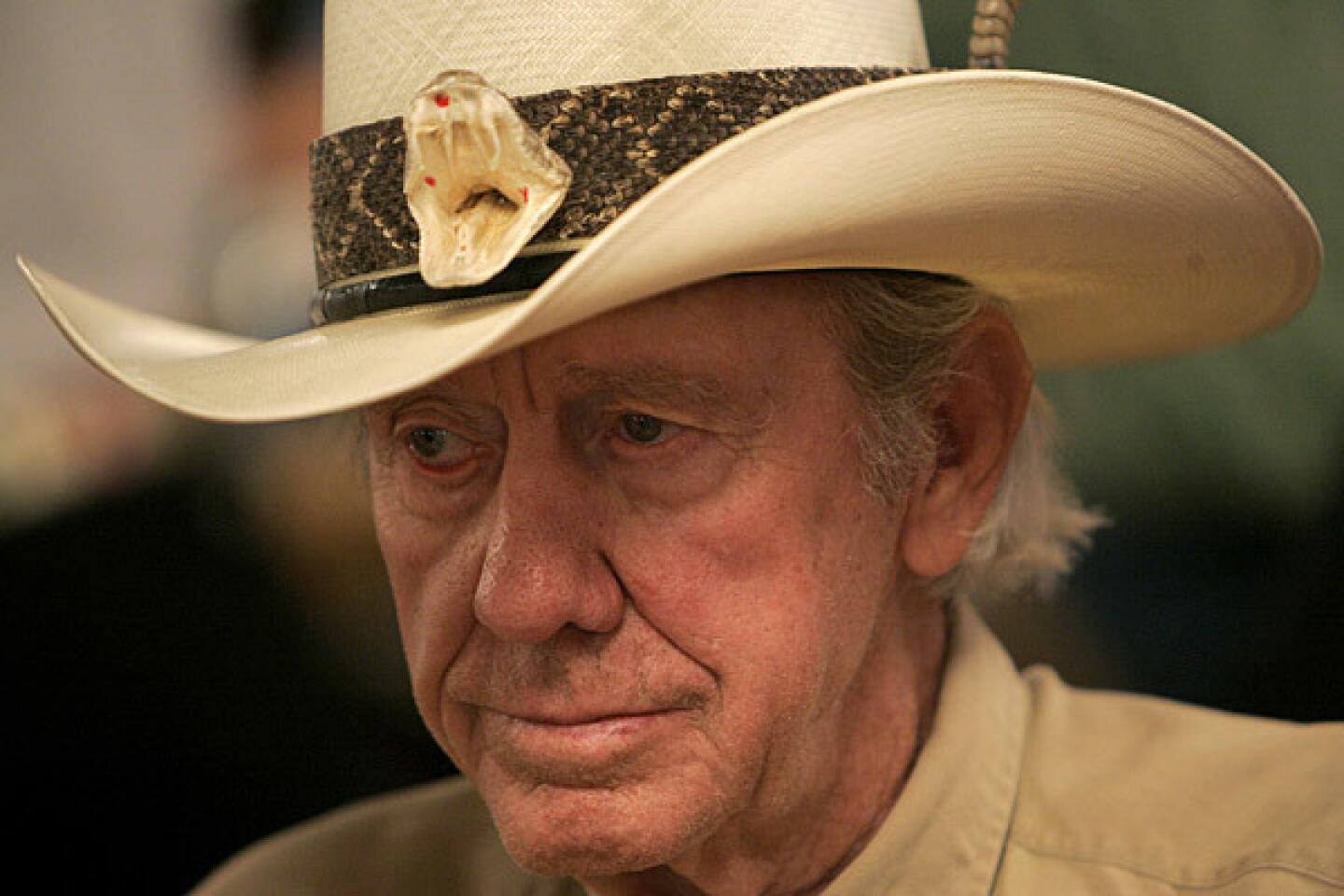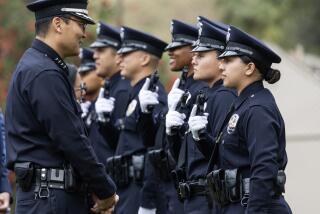James Q. Wilson dies at 80; pioneer in ‘broken windows’ approach to improve policing
- Share via
James Q. Wilson, a social scientist who helped launch a revolution in law enforcement as the co-inventor of the “broken windows” theory — the idea that eradicating graffiti, public drunkenness and other signposts of community decay was crucial to making neighborhoods safer — died Friday in Boston. He was 80.
The cause was complications of leukemia, according to his son, Matthew Wilson.
Often called the “father of community policing,” Wilson, who taught for many years at UCLA and Pepperdine University, was a widely admired public intellectual who wrote more than two dozen books on American government, criminal justice and moral issues. Former Democratic Sen. Daniel Patrick Moynihan of New York once called him “the smartest man in the United States.”
In 2003, Wilson was awarded the Presidential Medal of Freedom by President George W. Bush.
Wilson changed the face of American policing in 1982 when he and colleague George L. Kelling wrote an article for the Atlantic titled “Broken Windows: The Police and Neighborhood Safety.”
As crime rates soared across the country, the two academics made a provocative argument about the role of police: Instead of defining themselves mainly as crime fighters, Kelling and Wilson wrote, the police should become keepers of public order. Instead of focusing principally on the big crimes, such as robbery and murder, the authors said, they should pay more attention to the smaller problems that were eroding the quality of life in people’s communities and weakening their defenses to major crime.
Or, as Wilson and Kelling explained in deceptively simple terms: “One unrepaired broken window is a signal that no one cares, and so breaking more windows costs nothing.”
“That’s where American policing was falling down on the job,” William J. Bratton, who implemented the broken windows theory with dramatic success during his tenures as police chief in New York in the 1990s and Los Angeles in the 2000s, said in an interview Friday. “Jim Wilson and George Kelling reshaped the way law enforcement thought about its role and staunchly defended the idea of proactive policing that focuses not only on preventing crime but disorder.”
The broken windows approach bolstered the rise of community policing, which emphasized a closer partnership between citizens and police and was embraced by law enforcement agencies across the country.
The theory remains controversial. It alarms liberal critics who say it ignores the root causes of crime — factors such as poverty, racism and lack of economic opportunity. Other critics argue that broken windows strategies have not worked or unfairly target some populations. “A disproportionate number of minorities have been arrested, and police misconduct complaints have increased as stops, frisks and arrests for minor crimes have multiplied,” Bernard E. Harcourt wrote in his 2003 book “Illusion of Order.”
“The broken window theory, which was a very subtle argument for police discretion, was being represented as zero tolerance … which was used in a pejorative sense,” Kelling, a senior fellow at the Manhattan Institute, said in an interview. “We were not advocating zealotry on the part of police.
“What Jim and I did was, in a sense, rediscover the past, when police were concerned about disorderly behavior,” Kelling noted. “We gave police a rationale to pay attention to the problems bothering citizens.”
According to Bratton, who carried extra copies of the Atlantic article to hand out at conferences and other gatherings, the theory was often misrepresented as a crime cure-all, instead of as “an essential medicine in my medicine kit.”
During Bratton’s years in New York in the 1990s, serious crimes dropped 33% citywide and homicides by 50%. During his tenure in Los Angeles, killings were down by half and robberies by a third in 2009 compared to 2002, the year Bratton began the broken windows approach here. Arrests for the lesser crimes emphasized by the broken windows theory — such as disorderly conduct, prostitution, small-scale drug offenses — had increased 30% over the same period.
Calling Wilson his intellectual mentor, Bratton added, “Jim understood that the style of policing in the ‘70s and ‘80s, which had retreated from controlling disorder in our streets, was like neglecting a cancer. Broken windows says get the melanoma on the surface before it gets in and kills you.”
James Quinn Wilson was born May 27, 1931, in Denver and grew up in Long Beach. He graduated from the University of Redlands in 1952 and served three years in the Navy before entering the University of Chicago, where he earned a doctorate in political science in 1959. One of his key influences there was political science professor Edward C. Banfield, who taught the importance of translating complex ideas into plain and forceful English.
Decades later, fans of Wilson would attest that the lesson was well learned.
In 1961, he joined the faculty at Harvard University, where his scholarship on policing drew the attention of President Johnson’s administration. He was invited to join a presidential commission on crime, which sparked an inquiry that eventually became the focus of his professional work.
“The standard question was why did people commit crimes. I wanted to ask why people don’t commit them,” he told the New York Times in 1998.
Many of his books tackled thorny questions of crime and race, such as “Crime and Human Nature,” co-written with Richard J. Herrnstein and published in 1988.
“Even to allude to the possibility that races may differ in the distribution of those constitutional factors that are associated with criminality will strike some people as factually, ethically or prudentially wrong,” they wrote. “We disagree.”
Wilson’s views won favor among neoconservatives, not a popular faction at a liberal bastion like Harvard.
In 1986, after more than 25 years at Harvard, he moved to UCLA’s Anderson School of Management, where, some colleagues suggested, the more conservative atmosphere was a welcome change.
But Wilson, referring to his early years in Southern California, said he just wanted to come home. He later taught at Pepperdine.
He was often asked to advise elected leaders and LAPD brass preparing a blueprint to overhaul the policies and practices of the department in the wake of the 1991 police beating of motorist Rodney G. King during the stormy end of Chief Daryl Gates’ tenure.
Although best known for his contributions to policing, Wilson often said his proudest work was “The Moral Sense” (1993), which explores the basis of right and wrong behavior and makes the argument that moral impulses are shaped more strongly by biology than culture.
“He wanted to know what makes us tick,” said Arthur Brooks, president of the conservative American Enterprise Institute in Washington, which recently created the James Q. Wilson Chair in American Politics and Culture. “That is a window into the character of the man. He wanted to serve and wanted people to live a better life. That’s what he did with his life and his career.”
Reviews were mixed. “Reading this book is a little like talking to a well-intentioned, basically sound, but cranky old dinner partner,” the Washington Post wrote. “Wilson is often convincing. He makes solid arguments. But every once in a while you have to pause and wait while he drones on about kids these days … or some other half-relevant project from his youth.”
With John Dilulio, Wilson co-wrote “American Government” (1980), a widely used college text still in print. One of Wilson’s last books was “The Marriage Problem: How Our Culture Has Weakened Families.” (2002).
In addition to his son, Wilson is survived by his wife of 59 years, Roberta Wilson; a daughter, Annie Gilbert; and five grandchildren.
Los Angeles Times staff writer Joel Rubin contributed to this report.
More to Read
Start your day right
Sign up for Essential California for the L.A. Times biggest news, features and recommendations in your inbox six days a week.
You may occasionally receive promotional content from the Los Angeles Times.
